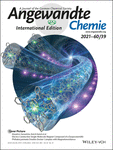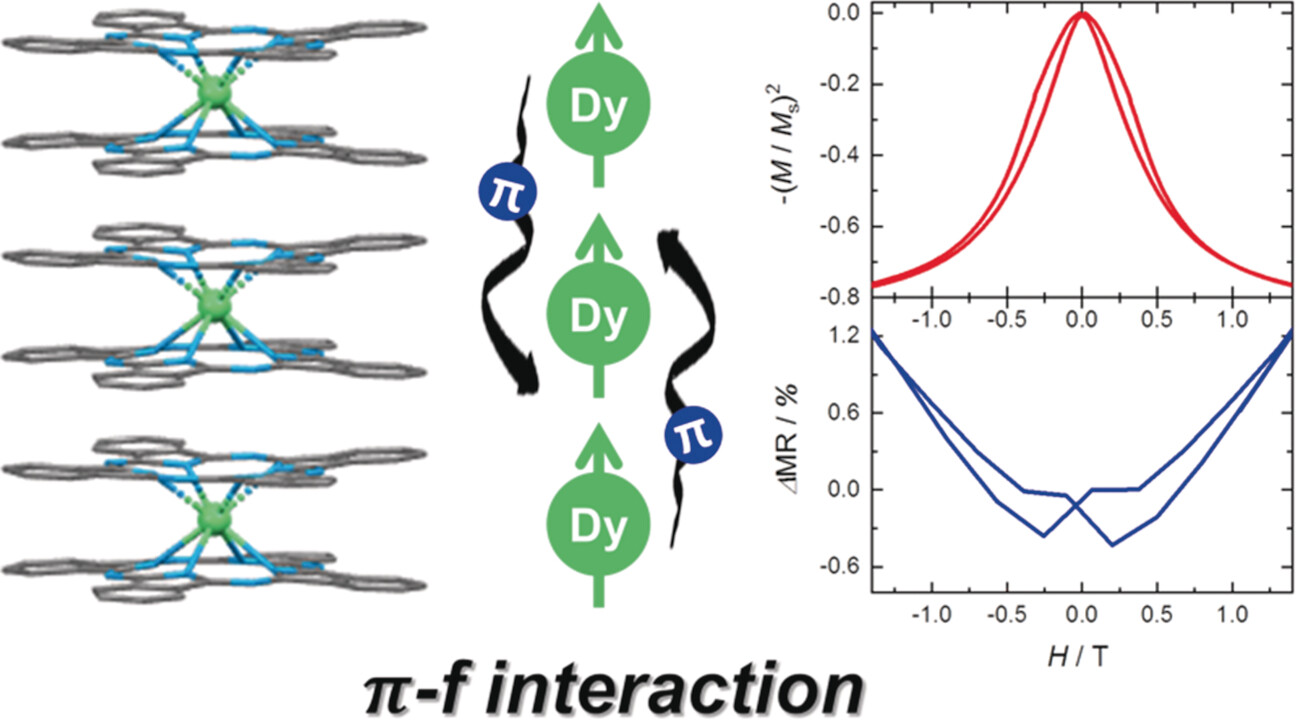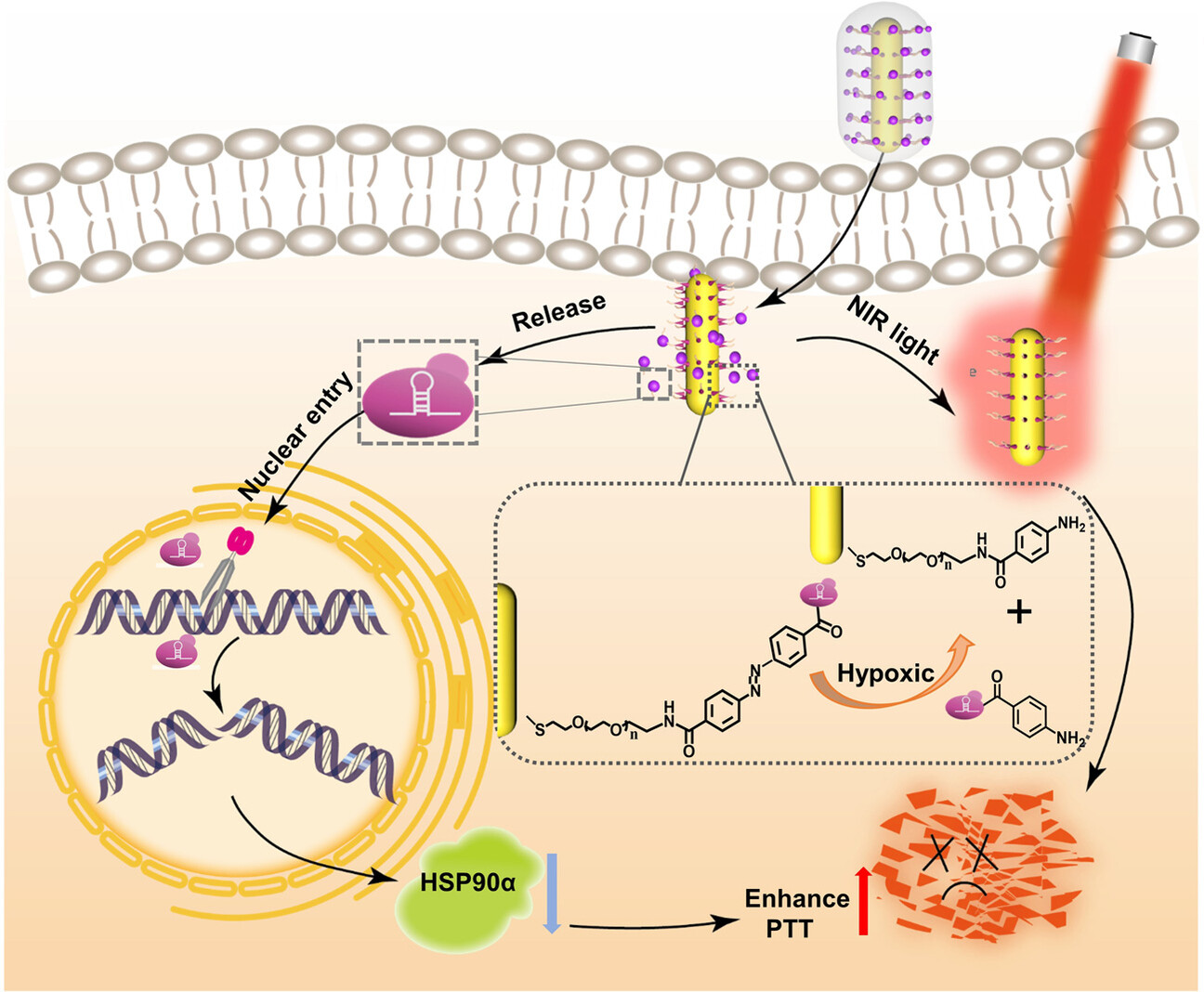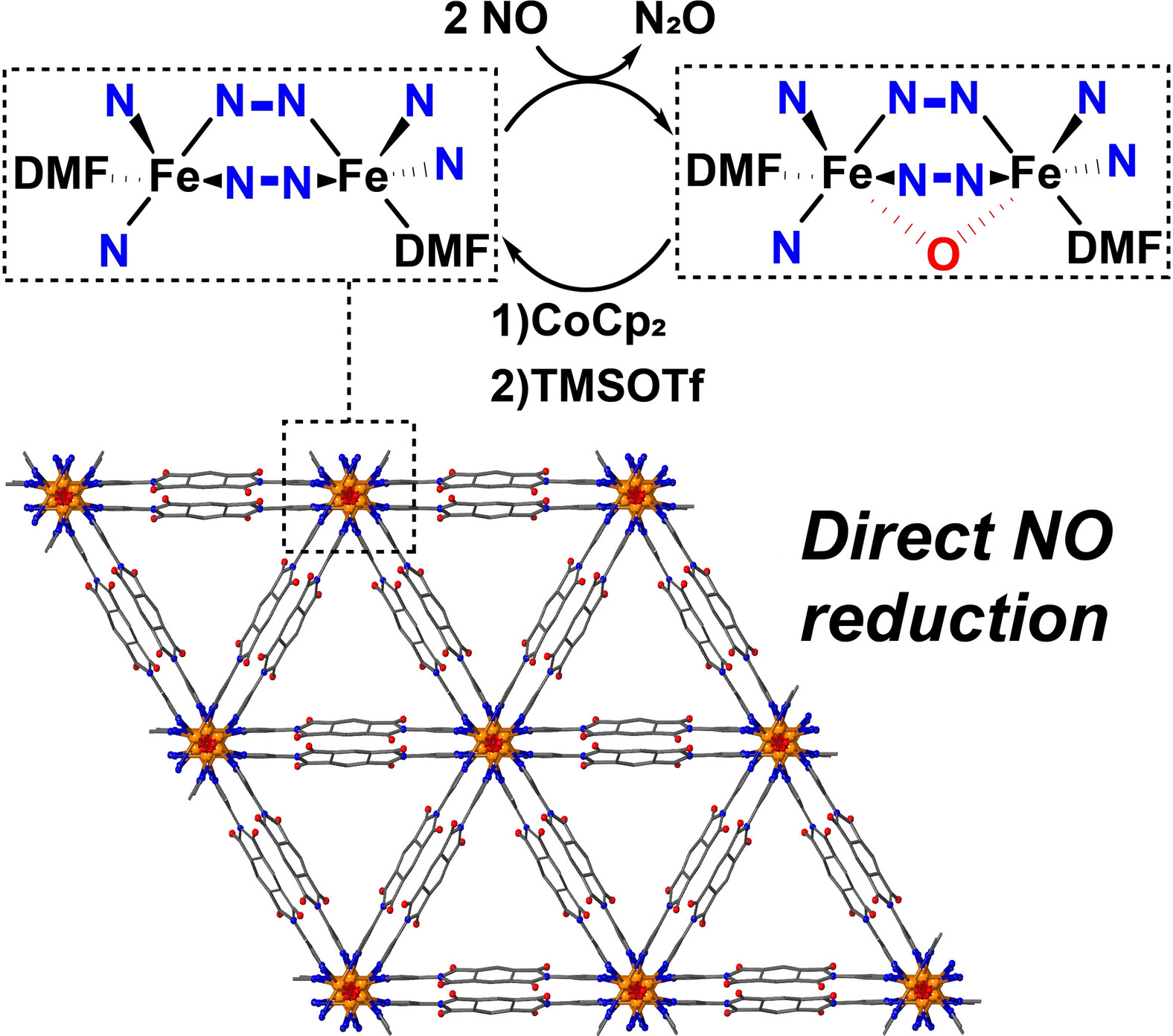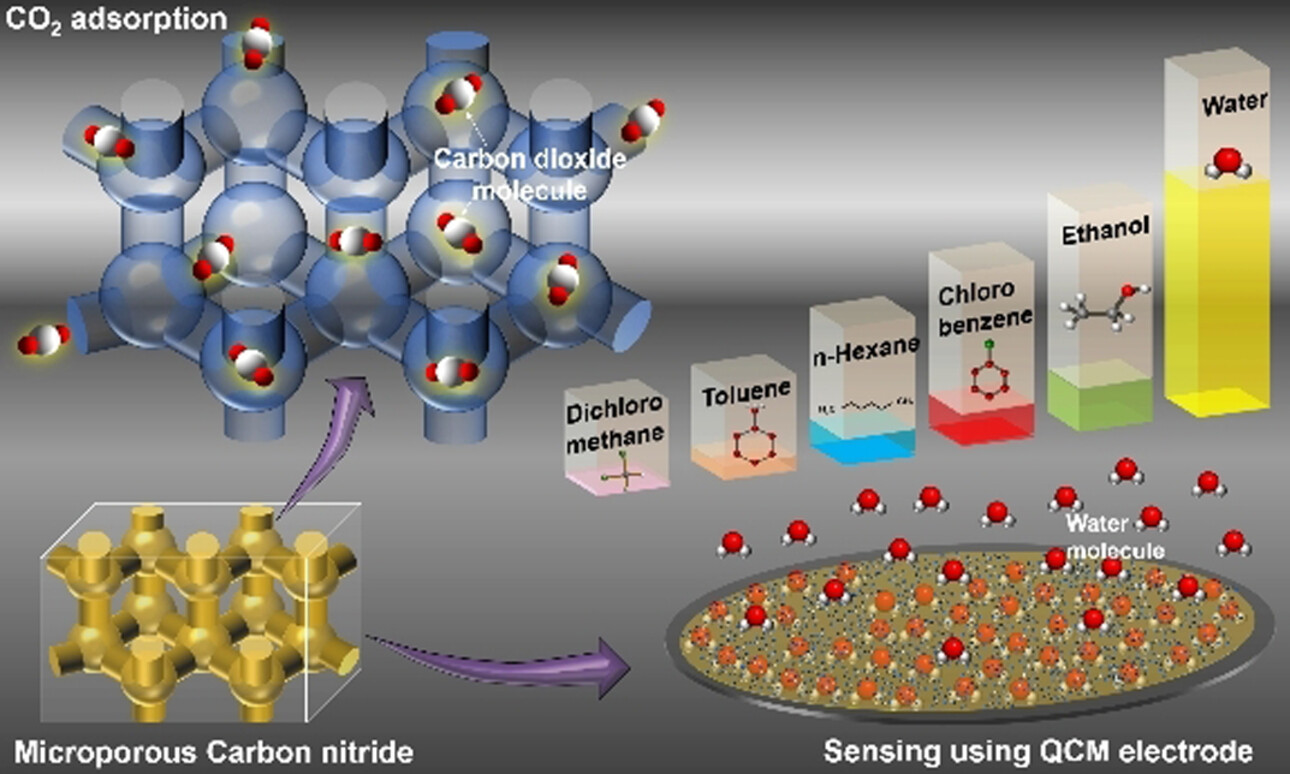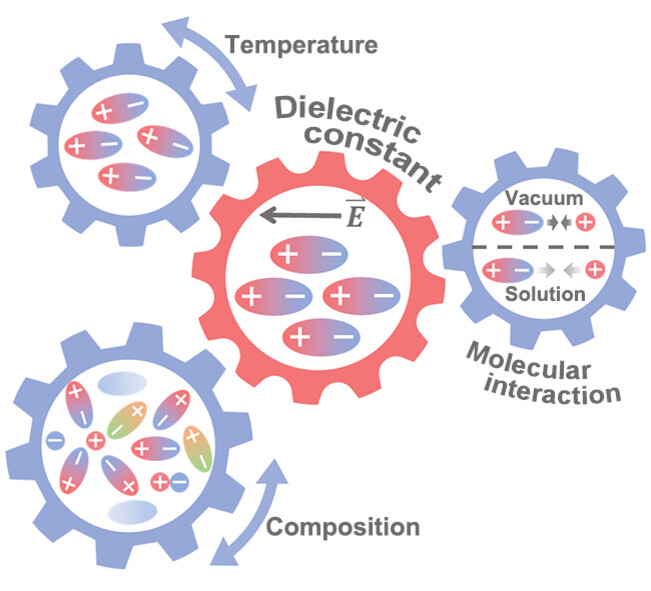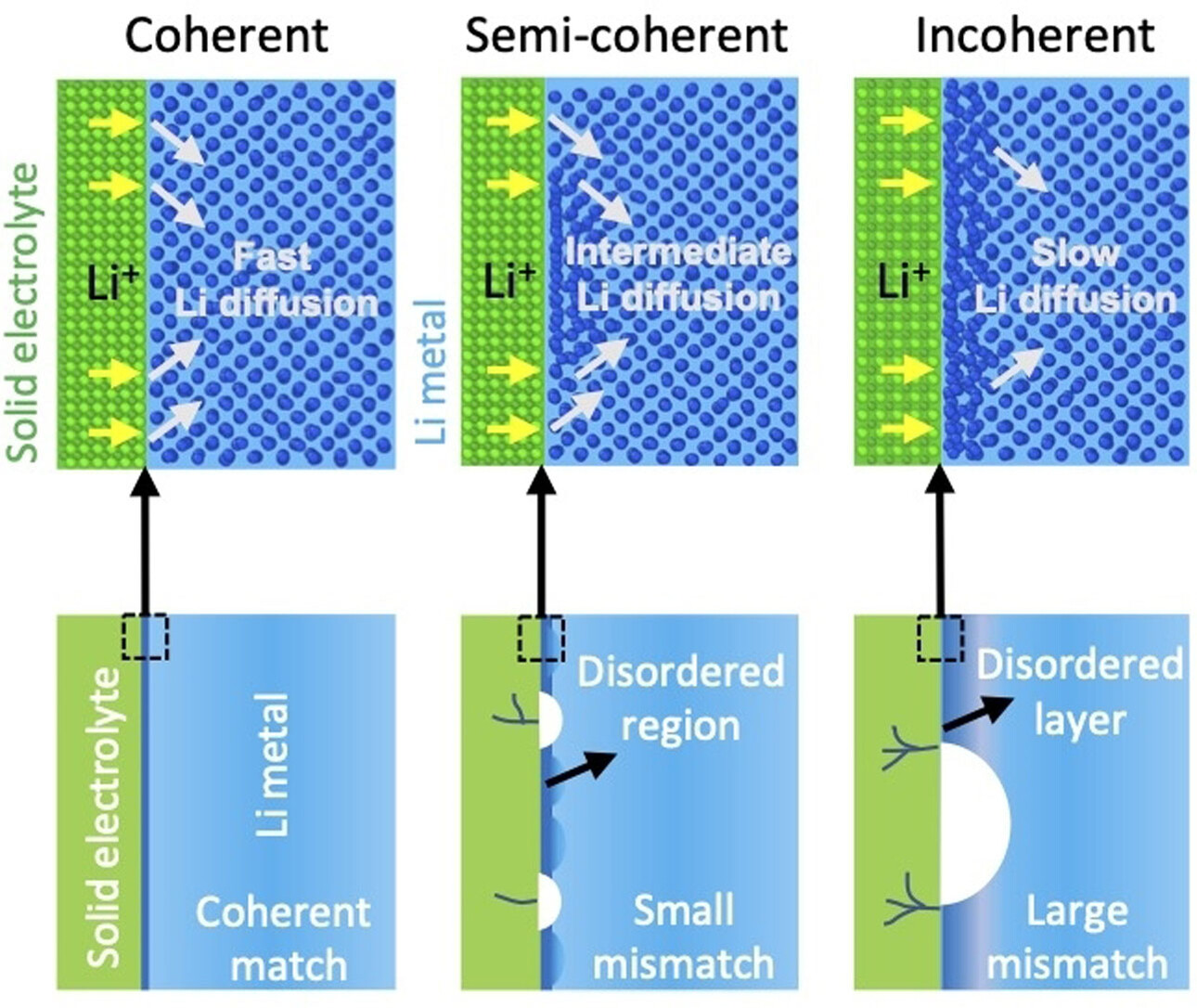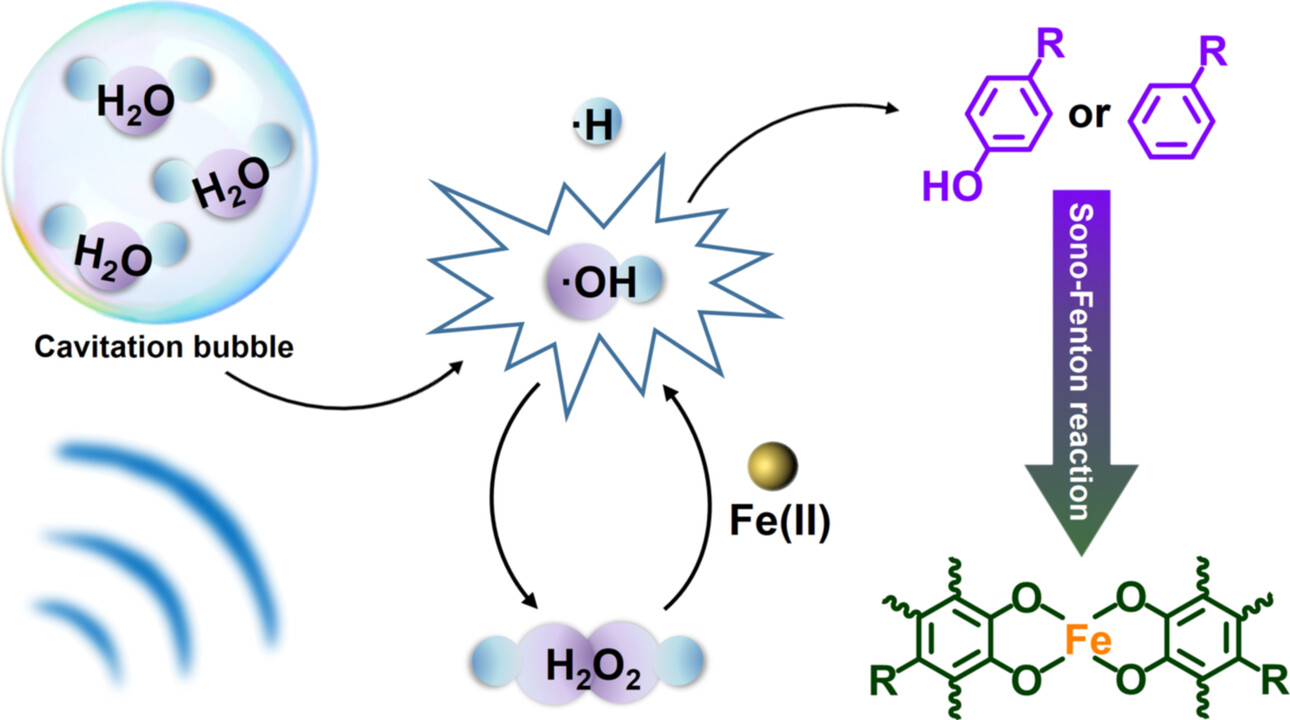Journal list menu
Export Citations
Download PDFs
Cover Pictures
Cover Picture: Electro-Conductive Single-Molecule Magnet Composed of a Dysprosium(III)-Phthalocyaninato Double-Decker Complex with Magnetoresistance (Angew. Chem. Int. Ed. 39/2021)
- Page: 21073
- First Published: 17 May 2021
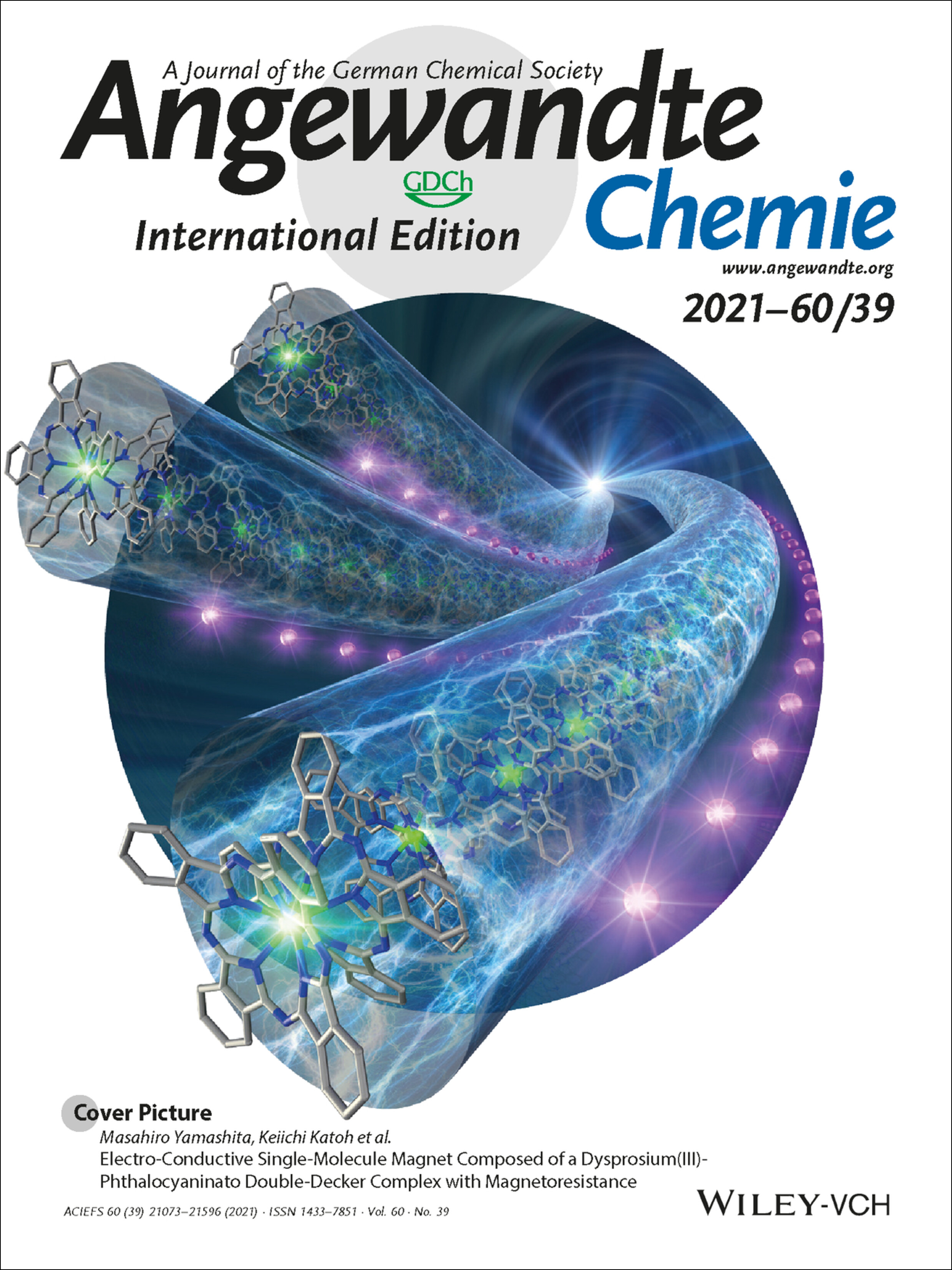
A one-dimensional arrangement of single-molecule magnets (SMMs), namely partially oxidized dysprosium(III) phthalocyaninato double-decker complexes, [DyPc2]Ix, was synthesized in the Communication by Keiichi Katoh, Masahiro Yamashita et al. on page 21179 by using electro-oxidation and chemical oxidation. The results of spectrophotometric analysis on [DyPc2]Ix are consistent with the Drude model, which theoretically explains the optical response of the metal. Since conductivity was observed at temperatures lower than the spin blocking temperature (TB), magnetoresistance (MR) effects observed as magnetic hysteresis were observed for the SMM. This strategy may pave the way for the construction of electro-conductive SMMs as spin valves.
Inside Cover: Creation of High-Performance Heterogeneous Photocatalysts by Controlling Ligand Desorption and Particle Size of Gold Nanocluster (Angew. Chem. Int. Ed. 39/2021)
- Page: 21074
- First Published: 12 July 2021
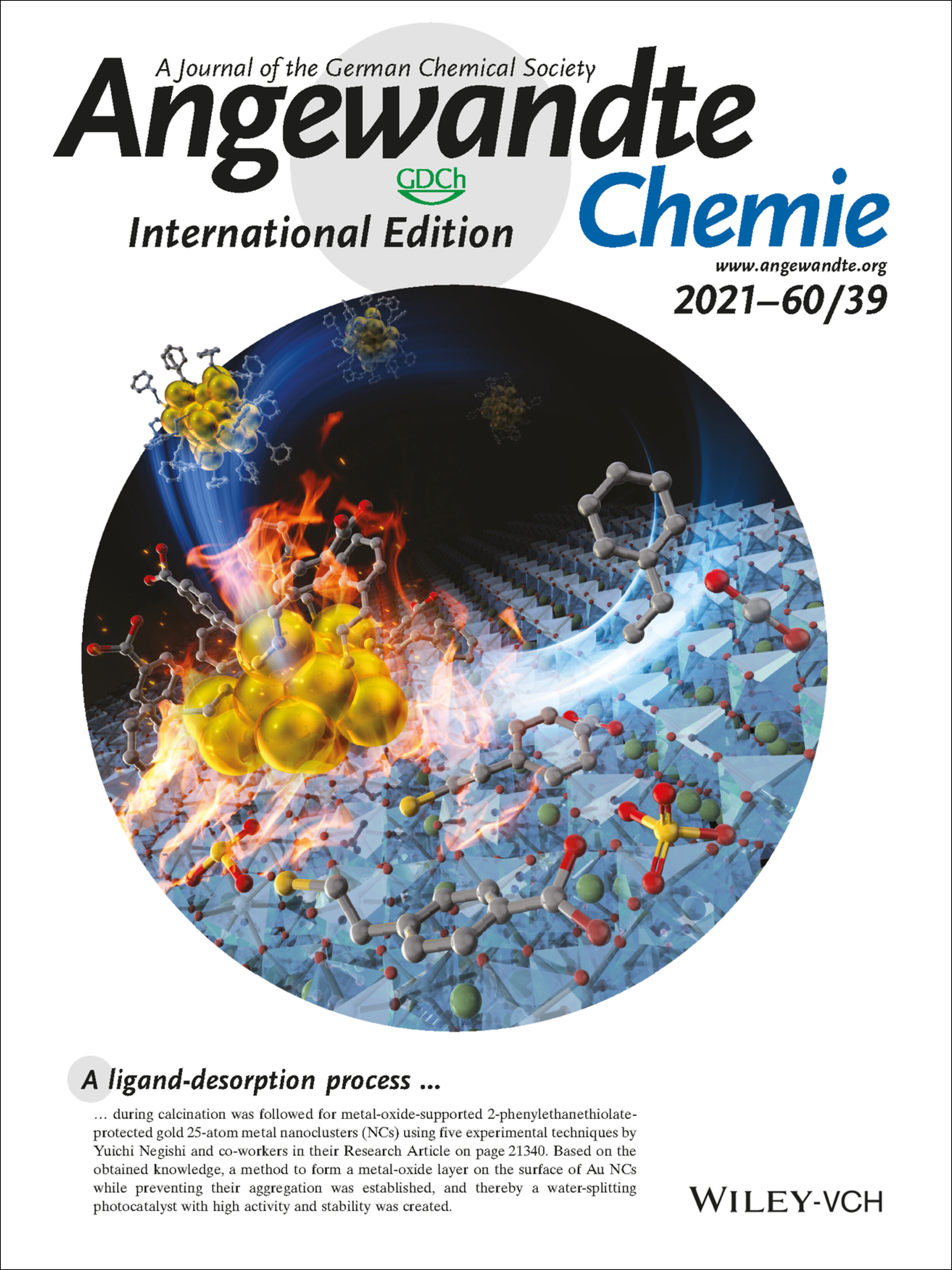
A ligand-desorption process during calcination was followed for metal-oxide-supported 2-phenylethanethiolate-protected gold 25-atom metal nanoclusters (NCs) using five experimental techniques by Yuichi Negishi and co-workers in their Research Article on page 21340. Based on the obtained knowledge, a method to form a metal-oxide layer on the surface of Au NCs while preventing their aggregation was established, and thereby a water-splitting photocatalyst with high activity and stability was created.
Inside Back Cover: Fluoride Chemistry in Tin Halide Perovskites (Angew. Chem. Int. Ed. 39/2021)
- Page: 21595
- First Published: 09 August 2021
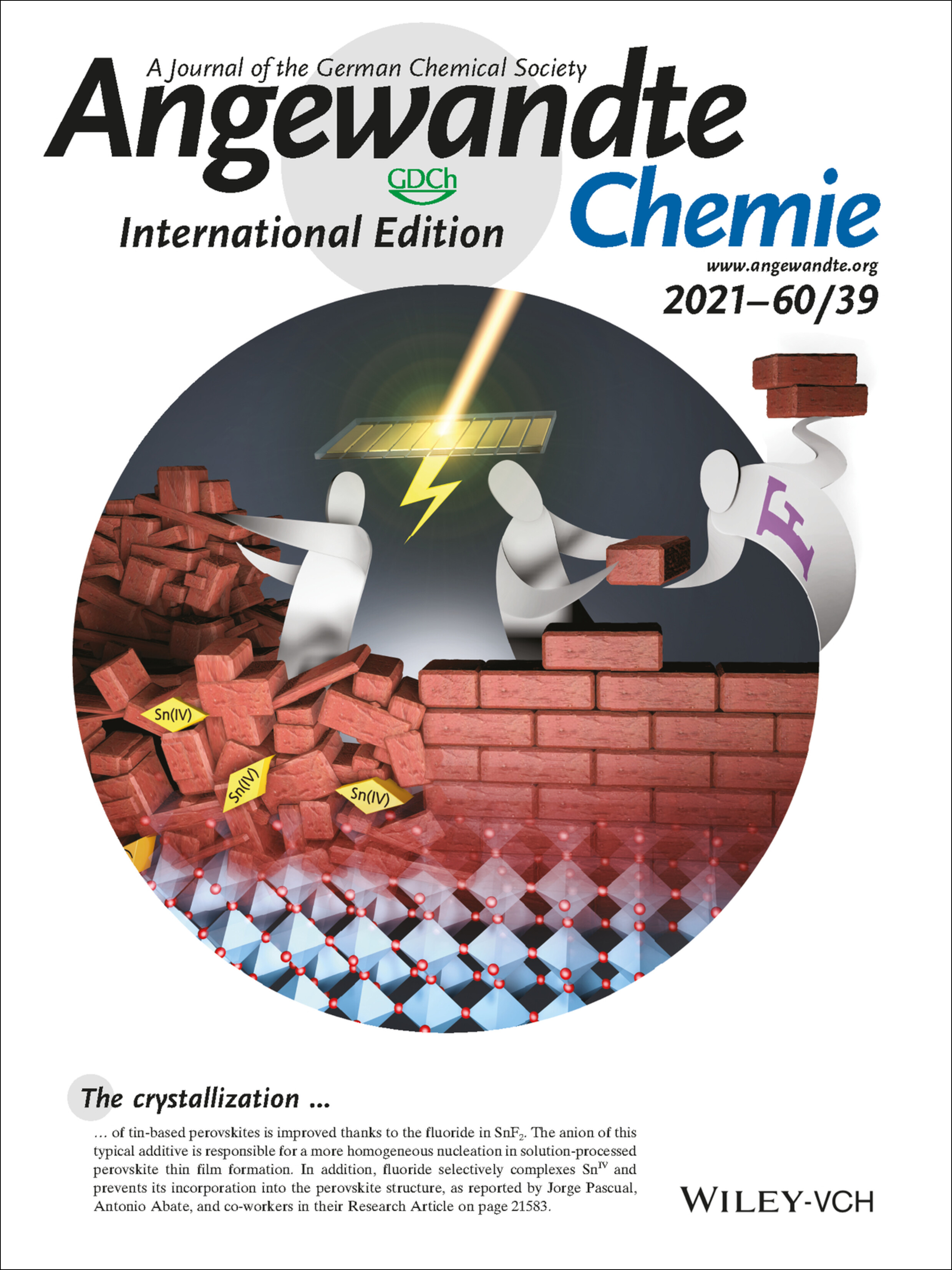
The crystallization of tin-based perovskites is improved thanks to the fluoride in SnF2. The anion of this typical additive is responsible for a more homogeneous nucleation in solution-processed perovskite thin film formation. In addition, fluoride selectively complexes SnIV and prevents its incorporation into the perovskite structure, as reported by Jorge Pascual, Antonio Abate, and co-workers in their Research Article on page 21583.
Back Cover: Coordination Polymer Glasses with Lava and Healing Ability for High-Performance Gas Sieving (Angew. Chem. Int. Ed. 39/2021)
- Page: 21596
- First Published: 12 July 2021
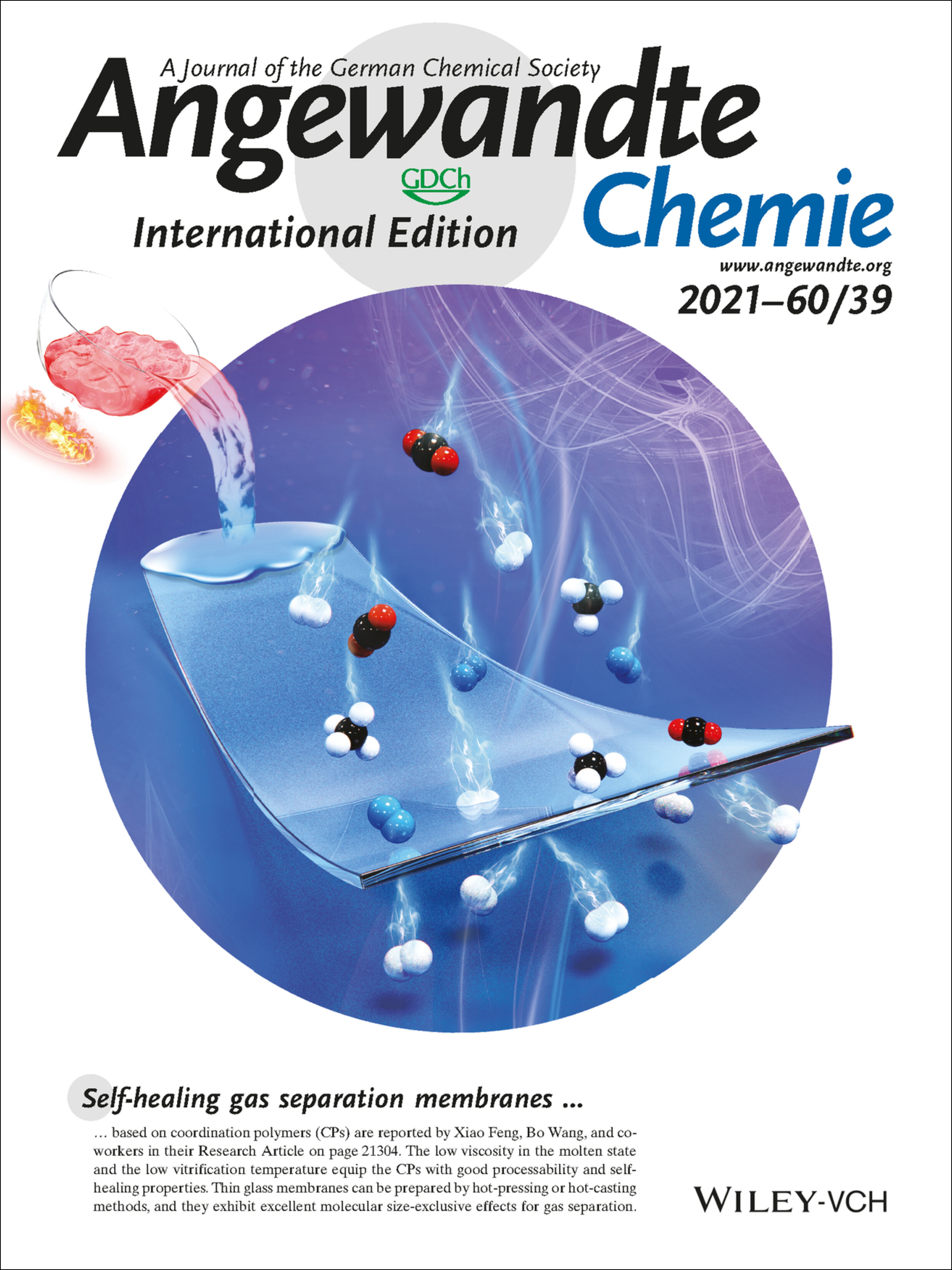
Self-healing gas separation membranes based on coordination polymers (CPs) are reported by Xiao Feng, Bo Wang, and co-workers in their Research Article on page 21304. The low viscosity in the molten state and the low vitrification temperature equip the CPs with good processability and self-healing properties. Thin glass membranes can be prepared by hot-pressing or hot-casting methods, and they exhibit excellent molecular size-exclusive effects for gas separation.
Frontispiece
Frontispiece: Di(indenyl)beryllium
- First Published: 14 September 2021
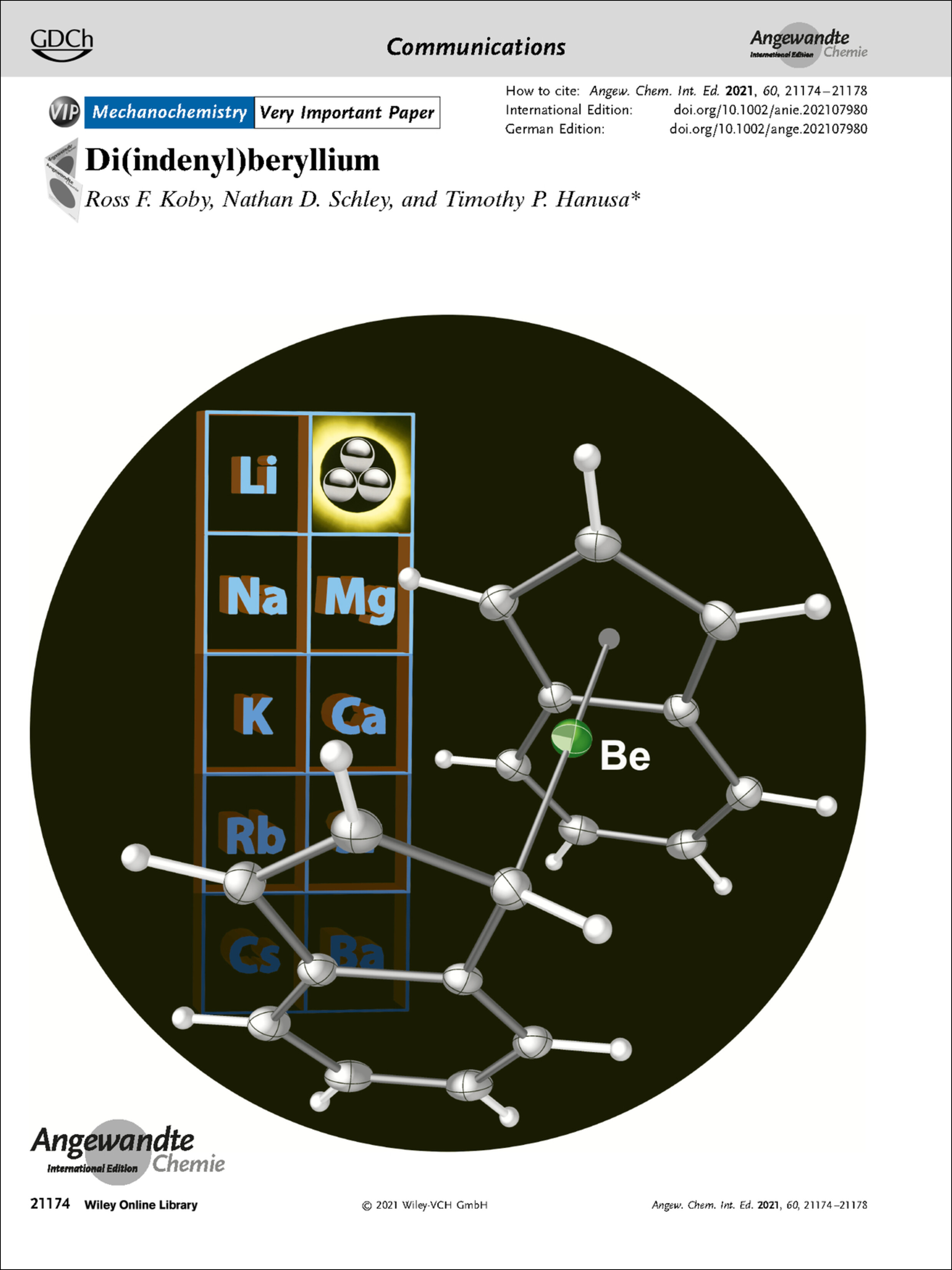
Organometallic Chemistry In their Communication on page 21174, Timothy P. Hanusa et al. report the synthesis of the di(indenyl)beryllium complex [Be(C9H7)2] by milling K[C9H7] with BeBr2.
Frontispiece: Covalently Aligned Molybdenum Disulfide–Carbon Nanotubes Heteroarchitecture for High-Performance Electrochemical Capacitors
- First Published: 14 September 2021
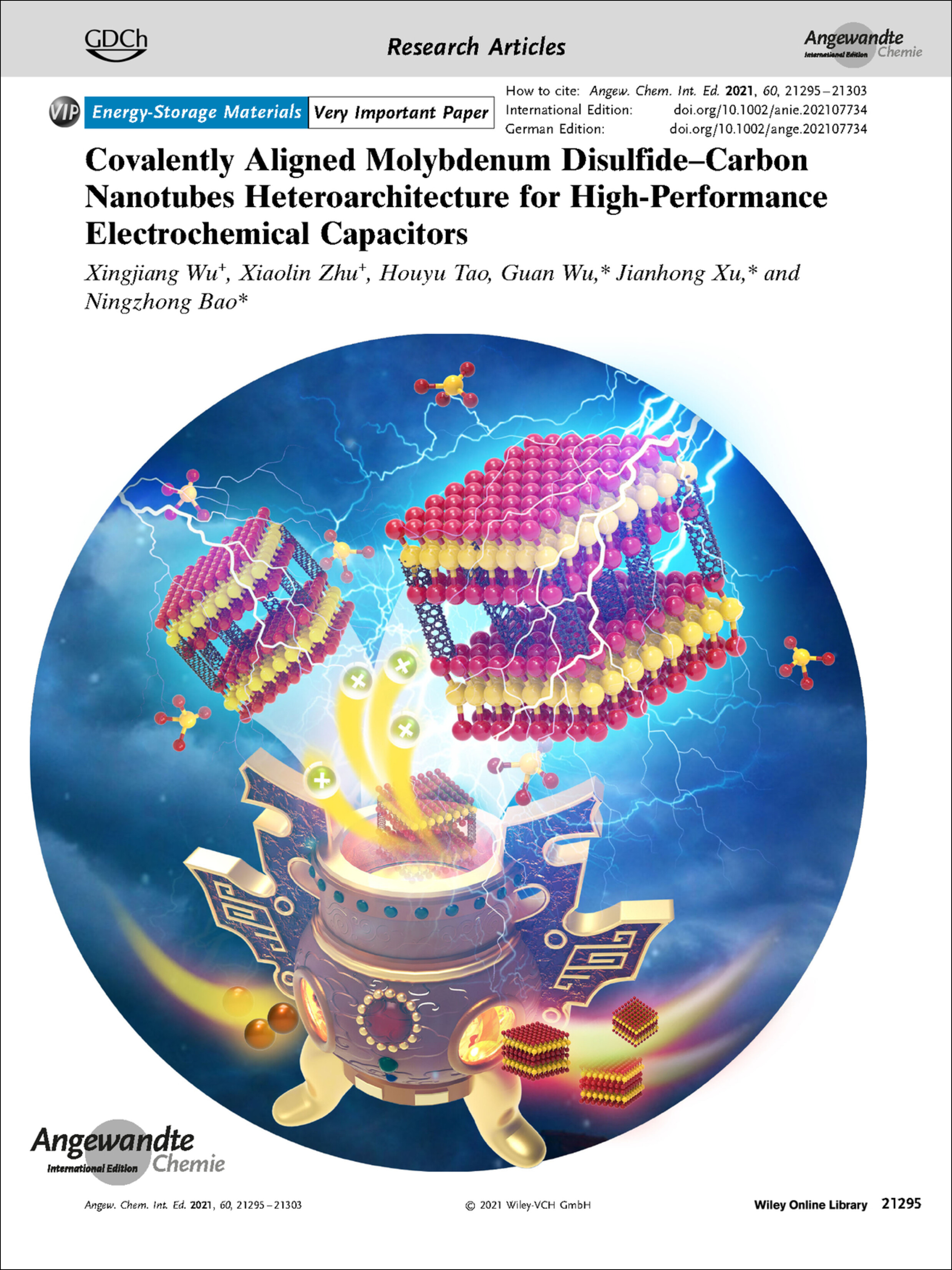
Energy Storage In their Research Article on page 21295, Guan Wu, Jianhong Xu, Ningzhong Bao et al. report a covalently aligned MoS2–carbon nanotube architecture for high-performance electrochemical capacitors.
Graphical Abstract
Graphical Abstract: Angew. Chem. Int. Ed. 39/2021
- Pages: 21077-21094
- First Published: 14 September 2021
Corrigenda
Berichtigung: Regio- und stereoselektive Synthese von funktionalisierten Dihydropyridinen, Pyridinen und 2H-Pyranen: Heck-Kupplung an monocyclopropanierten Heterocyclen
- Page: 21094
- First Published: 14 September 2021
Corrigendum: High-Silica CHA Zeolite Membrane with Ultra-High Selectivity and Irradiation Stability for Krypton/Xenon Separation
- Page: 21094
- First Published: 14 September 2021
Corrigendum: Giant Optical Activity and Second Harmonic Generation in 2D Hybrid Copper Halides
- Page: 21094
- First Published: 14 September 2021
Introducing …
Lilac Amirav
- Page: 21098
- First Published: 07 August 2021

“I am waiting for the day when someone will discover how to make those flying cars we were promised … My favorite science outreach activity is working with young kids. They have pure unbiased curiosity and chemistry seems to them like magic.” Find out more about Lilac Amirav in her Introducing … Profile.
Minireviews
Photoredox Catalysis
Visible-Light-Induced Homolysis of Earth-Abundant Metal-Substrate Complexes: A Complementary Activation Strategy in Photoredox Catalysis
- Pages: 21100-21115
- First Published: 18 February 2021
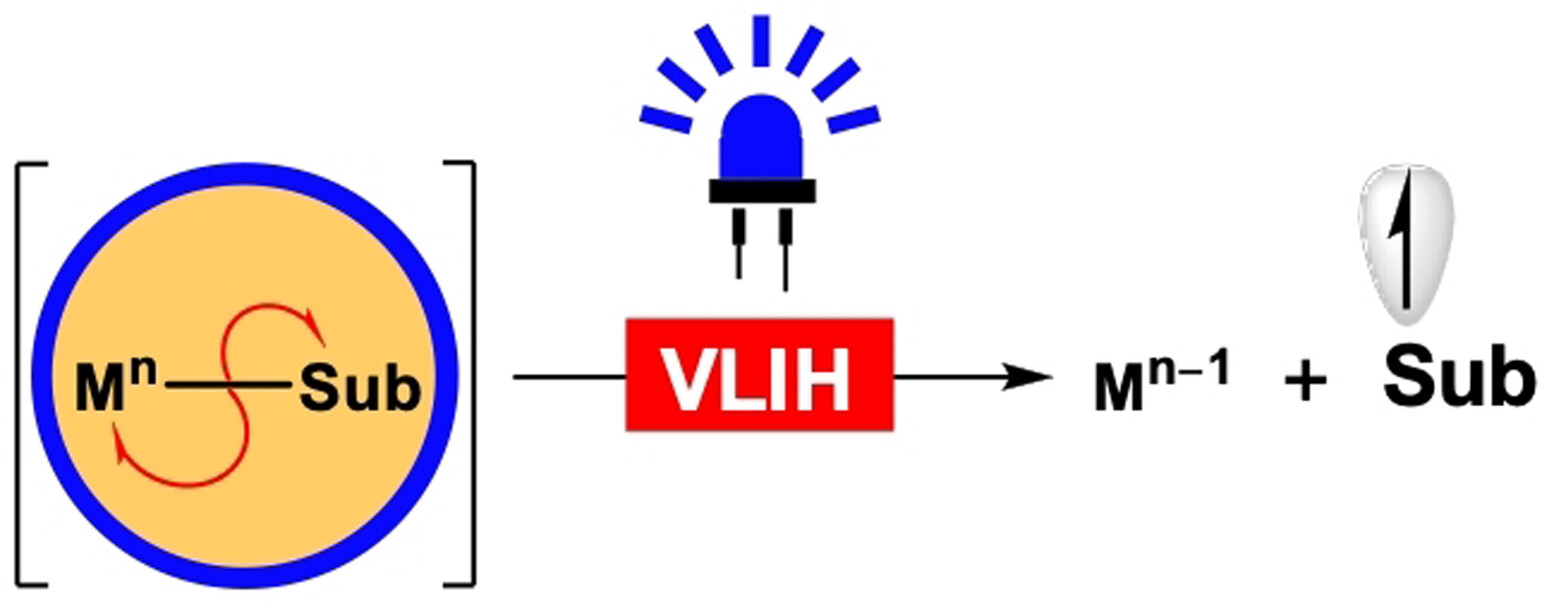
The use of earth-abundant metal complexes in photoredox catalysis offers a complementary mode of activation for organic substrates through visible-light-induced homolysis (VLIH) of metal–substrate bonds. This Minireview describes different electronic transitions that occur in photoexcited metal–substrate complexes as well as recent advancements and future prospects in this area.
Reviews
Radical Conjugate Addition
Recent Advances in Photoredox-Mediated Radical Conjugate Addition Reactions: An Expanding Toolkit for the Giese Reaction
- Pages: 21116-21149
- First Published: 24 February 2021
Photocatalysis
Coupling Strategy for CO2 Valorization Integrated with Organic Synthesis by Heterogeneous Photocatalysis
- Pages: 21150-21172
- First Published: 27 April 2021
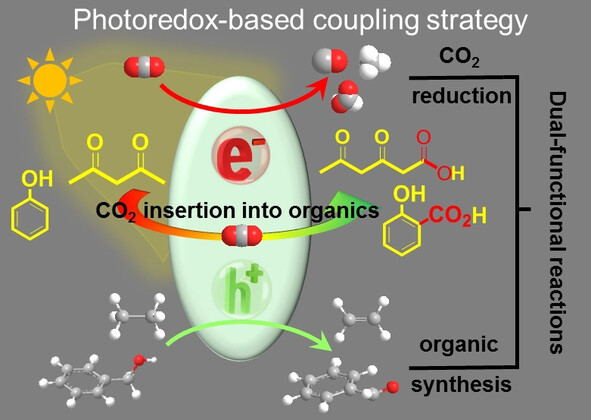
The photoredox-catalyzed win–win coupling strategy, in which CO2 valorization is integrated with organic synthesis in one reaction system, provides a promising approach that enables sufficient utilization of excited electrons and holes to achieve feasible and sustainable light-mediated artificial photosynthesis.
Communications
Mechanochemistry | Very Important Paper
Di(indenyl)beryllium
- Pages: 21174-21178
- First Published: 05 July 2021
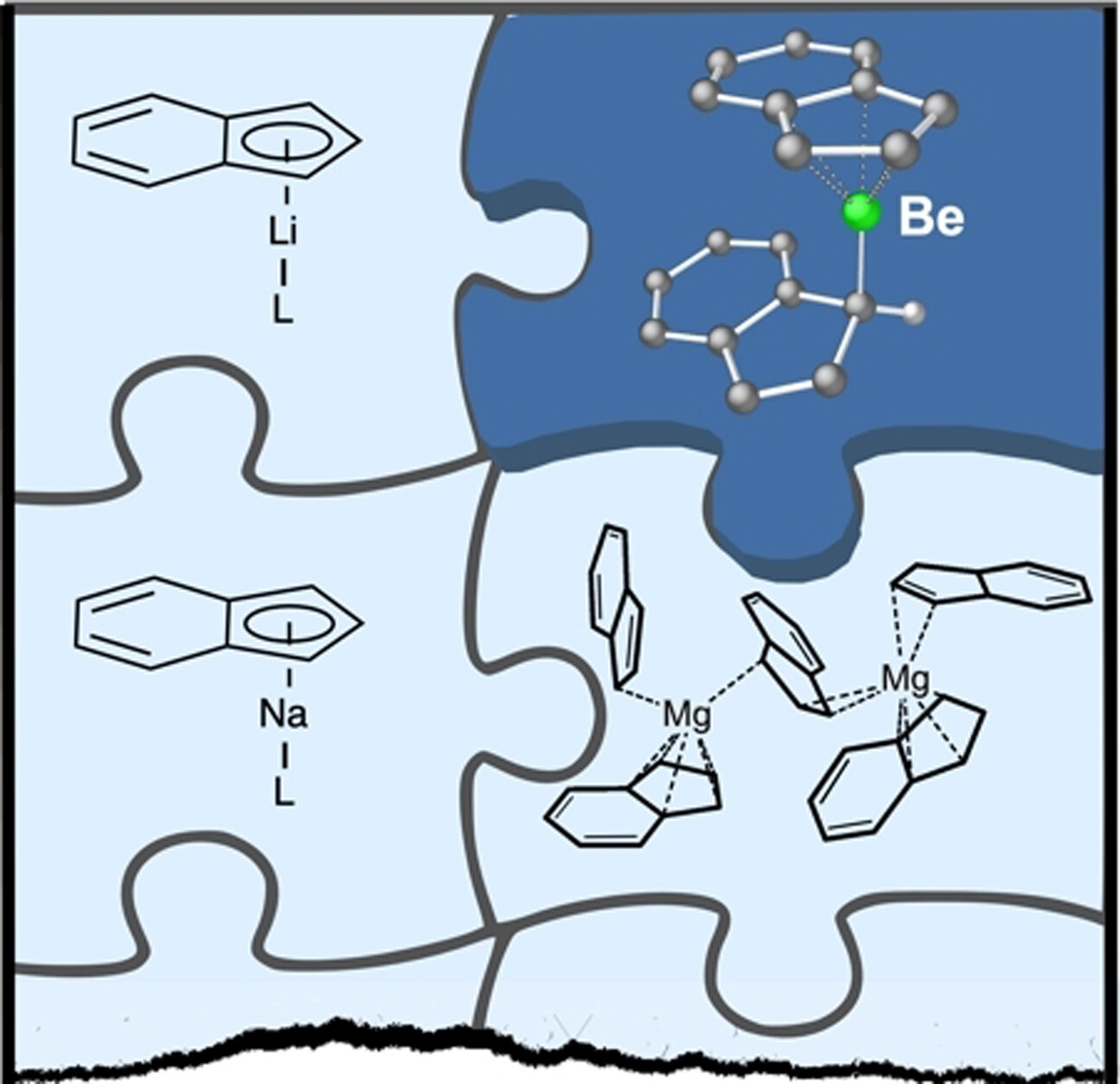
The final puzzle piece fits in! Beryllium is the last of the non-radioactive s-block metals to be coordinated to indenyl ligands. Milling K[C9H7] with BeBr2 produces the indenyl complex [Be(C9H7)2]. Its crystal structure reveals mixed η5/η1 ring coordination. The monomeric “half-sandwich” complex [Be{1,3-(SiMe3)2C9H5}Br] is available via the same method.
Magnetic Properties | Hot Paper
Electro-Conductive Single-Molecule Magnet Composed of a Dysprosium(III)-Phthalocyaninato Double-Decker Complex with Magnetoresistance
- Pages: 21179-21183
- First Published: 12 April 2021
Bioinorganic Chemistry | Very Important Paper
Thionitrite and Perthionitrite in NO Signaling at Zinc
- Pages: 21184-21188
- First Published: 28 June 2021
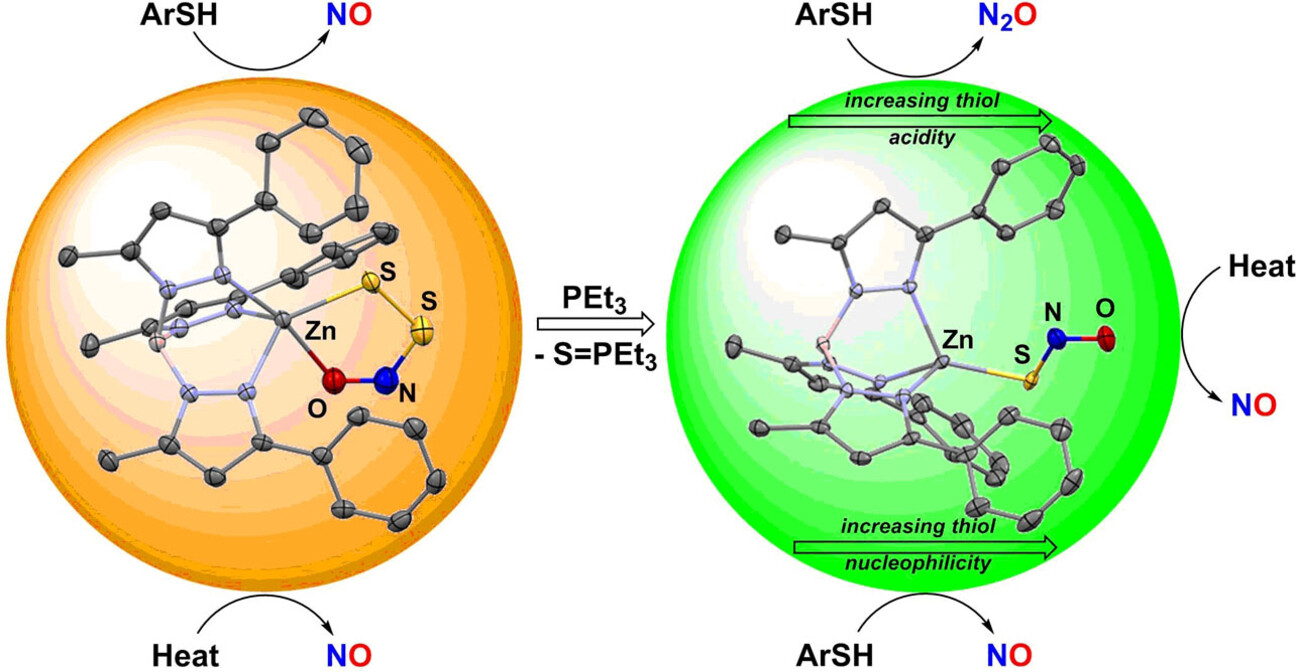
NO and H2S serve as signaling molecules in biology with intertwined reactivity through formation of HSNO and HSSNO. Zinc complexes of their conjugate bases Ph,MeTpZn(SNO) and Ph,MeTpZn(SSNO) result in stabilization of these anions at a biologically relevant metal site yet reveal disparate signaling output upon reaction with thiols.
Asymmetric Catalysis
Enantioselective Synthesis of Spiro-oxiranes: An Asymmetric Addition/Aldol/Spirocyclization Domino Cascade
- Pages: 21189-21194
- First Published: 29 July 2021
Click Chemistry
Fluorosulfuryl Isocyanate Enabled SuFEx Ligation of Alcohols and Amines
- Pages: 21195-21199
- First Published: 14 July 2021
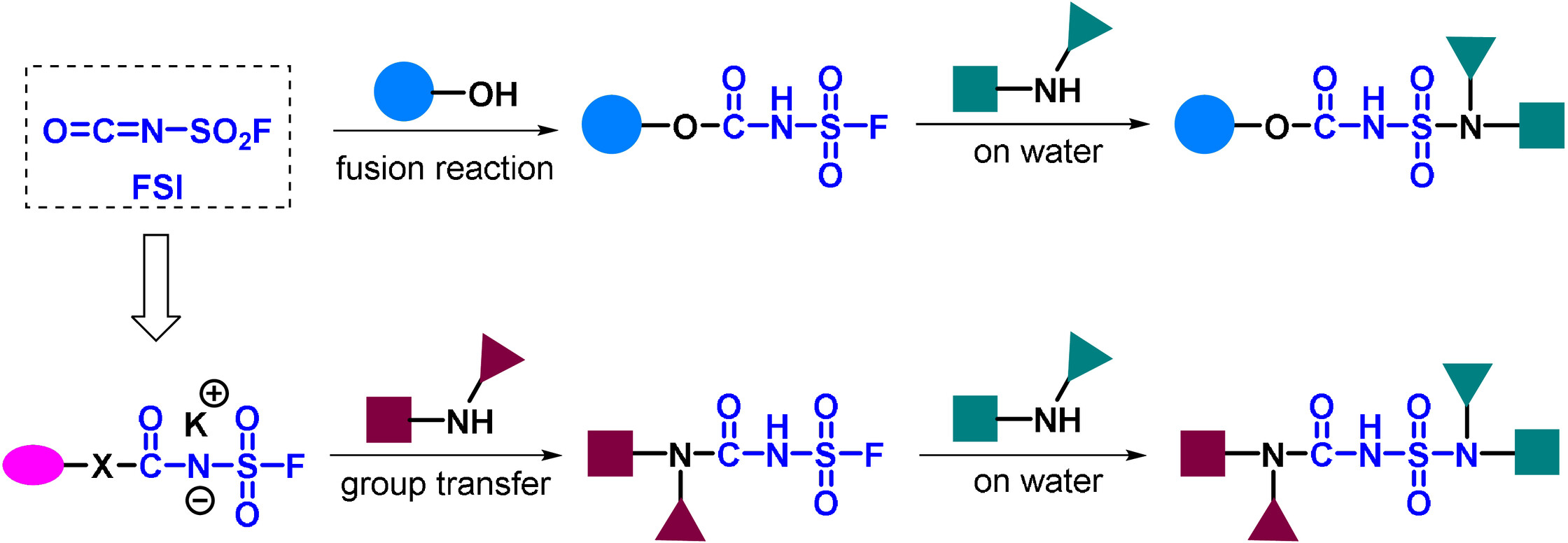
Fluorosulfuryl isocyanate (FSI, FSO2-NCO) is established as a reliable bis-electrophilic linker for stepwise attachment of alcohol and amine bearing modules. In step-1, FSI's isocyanate fuses directly and quickly with alcohols and phenols, and aliphatic amines are attached through the sulfuryl carbamate transfer strategy, both with remarkable selectivity. In step-2, best yields of S−N linked products arise with a unique on water process. The scope of SuFEx ligation is greatly expanded in directions which would be especially interesting for drug discovery and chemical biology.
Photothermal Therapy
Hypoxia-Responsive Gene Editing to Reduce Tumor Thermal Tolerance for Mild-Photothermal Therapy
- Pages: 21200-21204
- First Published: 23 July 2021
Spectroscopy | Hot Paper
Recognition of the True and False Resonance Raman Optical Activity
- Pages: 21205-21210
- First Published: 02 July 2021
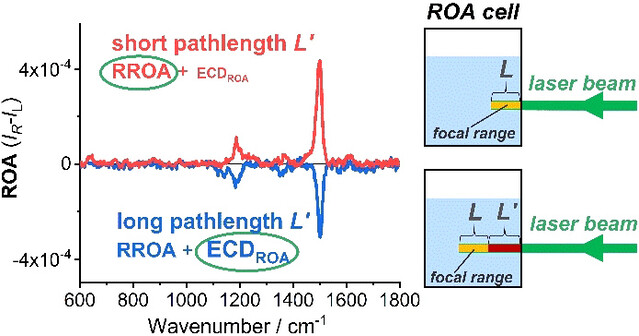
A strong influence of electronic circular dichroism on the measurement of resonance Raman optical activity of colorful chiral compounds is reported for a series of vitamin B12 derivatives. Neglecting this effect can lead to misinterpretation of recorded spectra, and seriously erroneous conclusions about molecular structure and chirality.
Coronavirus | Hot Paper
Discovery and Characterization of Spike N-Terminal Domain-Binding Aptamers for Rapid SARS-CoV-2 Detection
- Pages: 21211-21215
- First Published: 30 July 2021
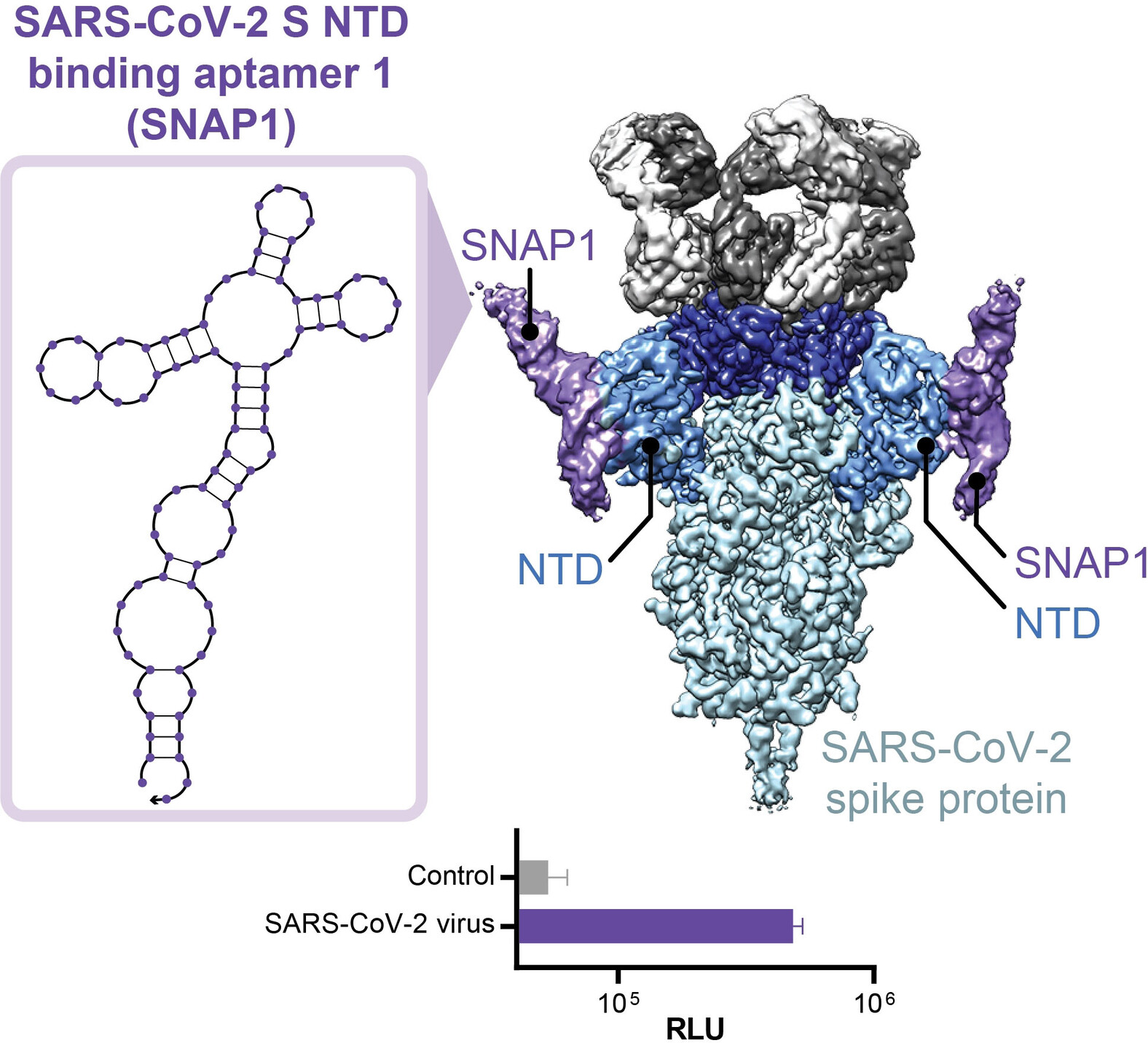
Rapid diagnostics are essential for early detection of COVID-19 and reduced disease spread. In this study, we discovered the DNA aptamer SNAP1 (SARS-CoV-2 spike protein N-terminal domain binding aptamer 1), which binds with high affinity and specificity to SARS-CoV-2 spike protein as well as UV-inactivated SARS-CoV-2 virus.
Nonlinear Optical Materials
[Ag(NH3)2]2SO4: A Strategy for the Coordination of Cationic Moieties to Design Nonlinear Optical Materials
- Pages: 21216-21220
- First Published: 15 July 2021
![[Ag(NH3)2]2SO4: A Strategy for the Coordination of Cationic Moieties to Design Nonlinear Optical Materials**](/cms/asset/2d4c3a33-3051-485d-b2e9-700823fd9687/anie202107780-toc-0001-m.jpg)
A new strategy for the coordination of cationic moieties offers a new possibility for the rational design and property modification of functional ionic materials, particularly NLO materials. As demonstrated by [Ag(NH3)2]2SO4 and Ag2SO4, the exceptional enhancements of the linear birefringence and nonlinear SHG properties are attributed to the unique [Ag(NH3)2]+ cation moiety.
Heterogeneous Catalysis | Hot Paper
Direct NO Reduction by a Biomimetic Iron(II) Pyrazolate MOF
- Pages: 21221-21225
- First Published: 02 August 2021
Nanodrugs | Hot Paper
A Cyanine-Mediated Self-Assembly System for the Construction of a Two-in-One Nanodrug
- Pages: 21226-21230
- First Published: 23 July 2021

Cyanine groups introduced into DNA could increase the noncovalent interaction between Cys-DNA and multiple drug molecules. More drug molecules were incorporated into Cys-DNA, tending to spontaneously form Cys-DNA/drug nanospheres. Therefore, cyanine-mediated self-assembly system provides an adaptable approach to prepare a two-in-one nanodrug.
Synthetic Methods | Hot Paper
C−Boron Enolates Enable Palladium Catalyzed Carboboration of Internal 1,3-Enynes
- Pages: 21231-21236
- First Published: 09 July 2021
Electrocatalysis | Hot Paper
P-Block Atomically Dispersed Antimony Catalyst for Highly Efficient Oxygen Reduction Reaction
- Pages: 21237-21241
- First Published: 13 July 2021
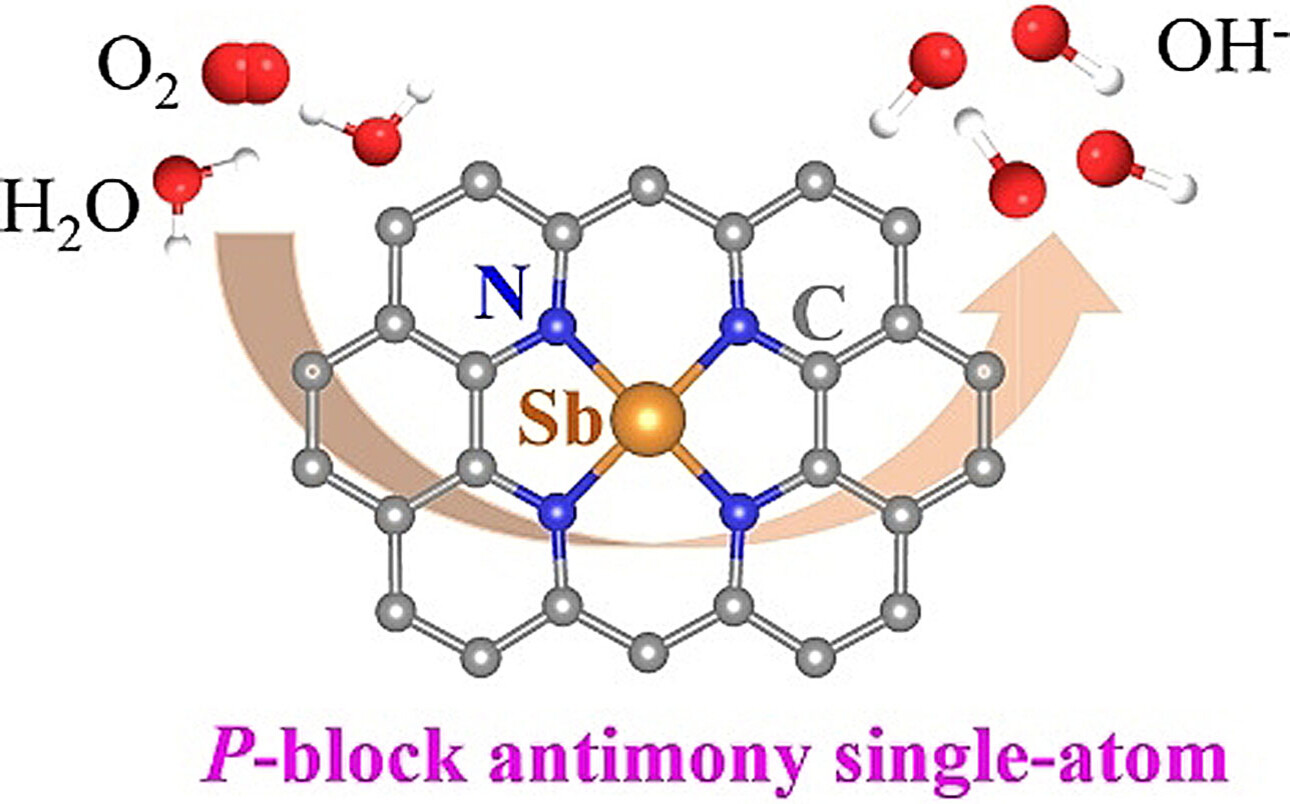
A p-block atomically dispersed antimony with Sb−N4 configuration has been developed and used as highly efficient oxygen reduction reaction (ORR) electrocatalyst. The excellent ORR activity is credited to the p orbital interaction between Sb cation and O2, which facilitates the charge transfer and generates appropriate adsorption strength for oxygen intermediates, lowering the energy barrier and modulating the rate-determining step.
Sensing
Microporous Carbon Nitride (C3N5.4) with Tetrazine based Molecular Structure for Efficient Adsorption of CO2 and Water
- Pages: 21242-21249
- First Published: 10 August 2021
Covalent Organic Frameworks
Deuterated Covalent Organic Frameworks with Significantly Enhanced Luminescence
- Pages: 21250-21255
- First Published: 16 July 2021
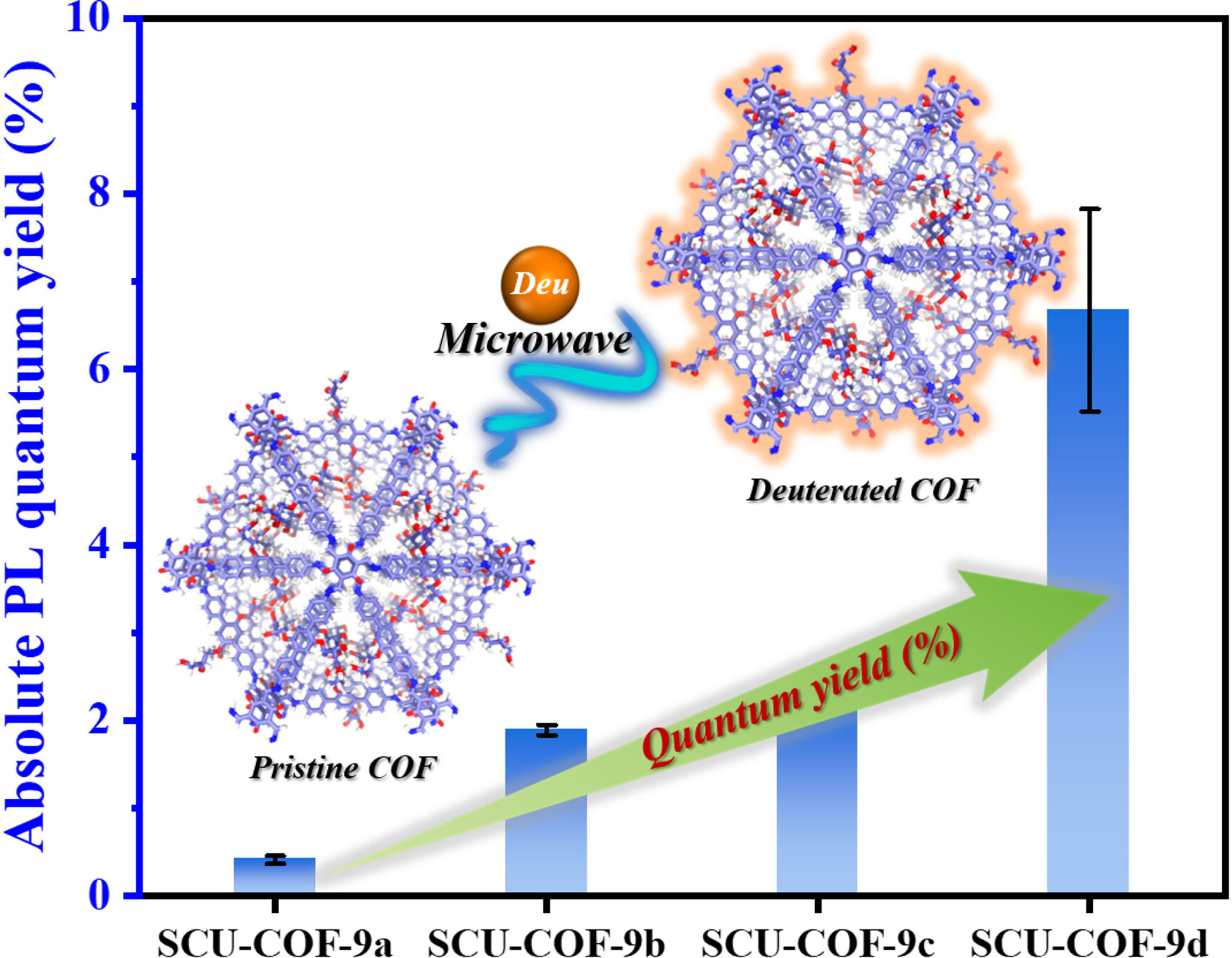
A new approach to improve luminescence performance of covalent organic frameworks (COFs) is demonstrated by introducing an isotope effect, which is achieved through substitution of hydrogen in high-frequency oscillators X-H (X=O, N, C) by the heavier isotope deuterium. The first deuterated COF exhibits a 19-fold enhancement in quantum yield over the non-deuterated counterpart.
Synthetic Methods
Dynamic Kinetic Asymmetric Transformation of Racemic Diastereomers: Diastereo- and Enantioconvergent Michael–Henry Reactions to Afford Spirooxindoles Bearing Furan-Fused Rings
- Pages: 21256-21260
- First Published: 08 July 2021

Organocatalytic Michael–Henry cascade reactions that occur through dynamic kinetic asymmetric transformations of racemic diastereomers having central and axial chiralities have been developed for the synthesis of spirooxindoles bearing furan-fused ring systems. The products, with four new chiral carbon centers, were obtained as single diastereomers in high yields with high enantioselectivities.
Heterogeneous Catalysis | Hot Paper
Regulating Local Electron Density of Iron Single Sites by Introducing Nitrogen Vacancies for Efficient Photo-Fenton Process
- Pages: 21261-21266
- First Published: 09 August 2021
Total Synthesis
Cycloaddition
Mild Intermolecular Synthesis of a Cyclopropane-Containing Tricyclic Skeleton: Unusual Reactivity of Isobenzopyryliums
- Pages: 21272-21276
- First Published: 03 August 2021
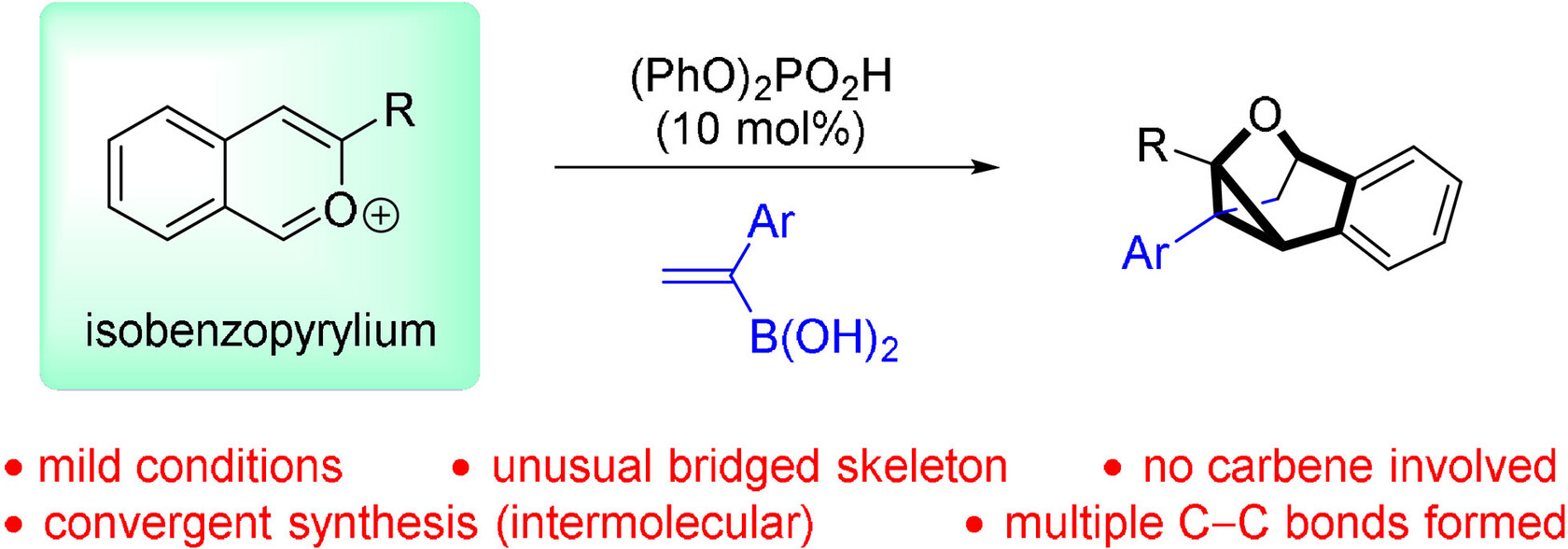
A new intermolecular approach for the expedient access to cyclopropane-incorporated tricyclic skeleton from the readily available isobenzopyryliums and vinyl boronic acids has been achieved. This protocol does not involve the highly active carbenoid intermediates or strong conditions as compared to traditional approaches.
Photocatalysis
Rapid and Direct Photocatalytic C(sp3)−H Acylation and Arylation in Flow
- Pages: 21277-21282
- First Published: 30 July 2021

Need for speed: An efficient and fast photocatalytic procedure that enables the acylation/arylation of unfunctionalized alkyl derivatives in flow has been realized by combining decatungstate photocatalysis and nickel catalysis. The methodology shows great functional group tolerance and high regioselectivity, and can be used for the late-stage functionalization of various biologically-relevant molecules.
C−H Functionalization | Very Important Paper
Four-Selective Pyridine Alkylation via Wittig Olefination of Dearomatized Pyridylphosphonium Ylides
- Pages: 21283-21288
- First Published: 03 August 2021

A Wittig reaction within a dearomatized pyridine ring system results in 4-alkylated pyridines, a valuable motif in the pharmaceutical and agrochemical sciences. N-Triazinyl salts are key to this strategy, and a range of substituted pyridines and aldehydes are amenable. Late-stage methylation is also feasible using a formaldehyde surrogate.
Heterocycles
Design, Synthesis and Hydrogen Bonding of B3N6-[4]Triangulene
- Pages: 21289-21294
- First Published: 03 August 2021
![Design, Synthesis and Hydrogen Bonding of B3N6-[4]Triangulene](/cms/asset/c13b176c-00c4-454f-97b3-d9662f24a747/anie202109326-toc-0001-m.jpg)
B3N6-[4]triangulene, which is isoelectronic to the trianion of [4]triangulene, represents a key structural unit of a new hypothetical boron carbon nitride. The tert-butylated derivative of B3N6-[4]triangulene is synthesized by threefold nitrogen-directed borylation. Its fluorescence in solution is responsive to binding p-nitrobenzoate anion through H-bonds, and it forms DD-AA H-bond arrays with di(tert-butyl)-pyrenetetraone in the co-crystal.
Research Articles
Energy-Storage Materials | Very Important Paper
Covalently Aligned Molybdenum Disulfide–Carbon Nanotubes Heteroarchitecture for High-Performance Electrochemical Capacitors
- Pages: 21295-21303
- First Published: 28 June 2021

A heteroarchitecture of MoS2-CNTs was developed in which CNTs are vertically anchored within MoS2 by a C−Mo covalent bond. Due to the high-speed interlaminar conductivity, unimpeded ion-diffusion channels, and sufficient pseudocapacitive reactivity, the all-unified solid-state flexible ECs show high energy density and large capacitance, which can power wearable health-monitoring devices efficiently.
Coordination Polymers | Hot Paper
Coordination Polymer Glasses with Lava and Healing Ability for High-Performance Gas Sieving
- Pages: 21304-21309
- First Published: 26 May 2021

Four coordination polymers with good flowability at low vitrification temperature were developed and fabricated into high-performance gas separation membranes by hot-casting or hot-pressing methods. The obtained membranes show excellent H2 sieving ability, rivaling against the best-reported gas separation membranes. The cracks and functions of the broken membranes can be easily healed upon heating.
Electrochemistry
Understanding and Calibration of Charge Storage Mechanism in Cyclic Voltammetry Curves
- Pages: 21310-21318
- First Published: 12 July 2021

Well-separated physical capacitance, pseudo-capacitance, and diffusive capacity are achieved from the CV curves of typical electrode materials for metal-ion batteries after three successive treatments including de-polarization, de-residual and de-background as well as non-linear fitting calculation, offering a more rational and reliable method to calculate the pseudo-capacitance contribution.
Radicals
Spin–Spin Interactions in One-Dimensional Assemblies of a Cumulene-Based Singlet Biradical
- Pages: 21319-21326
- First Published: 07 June 2021
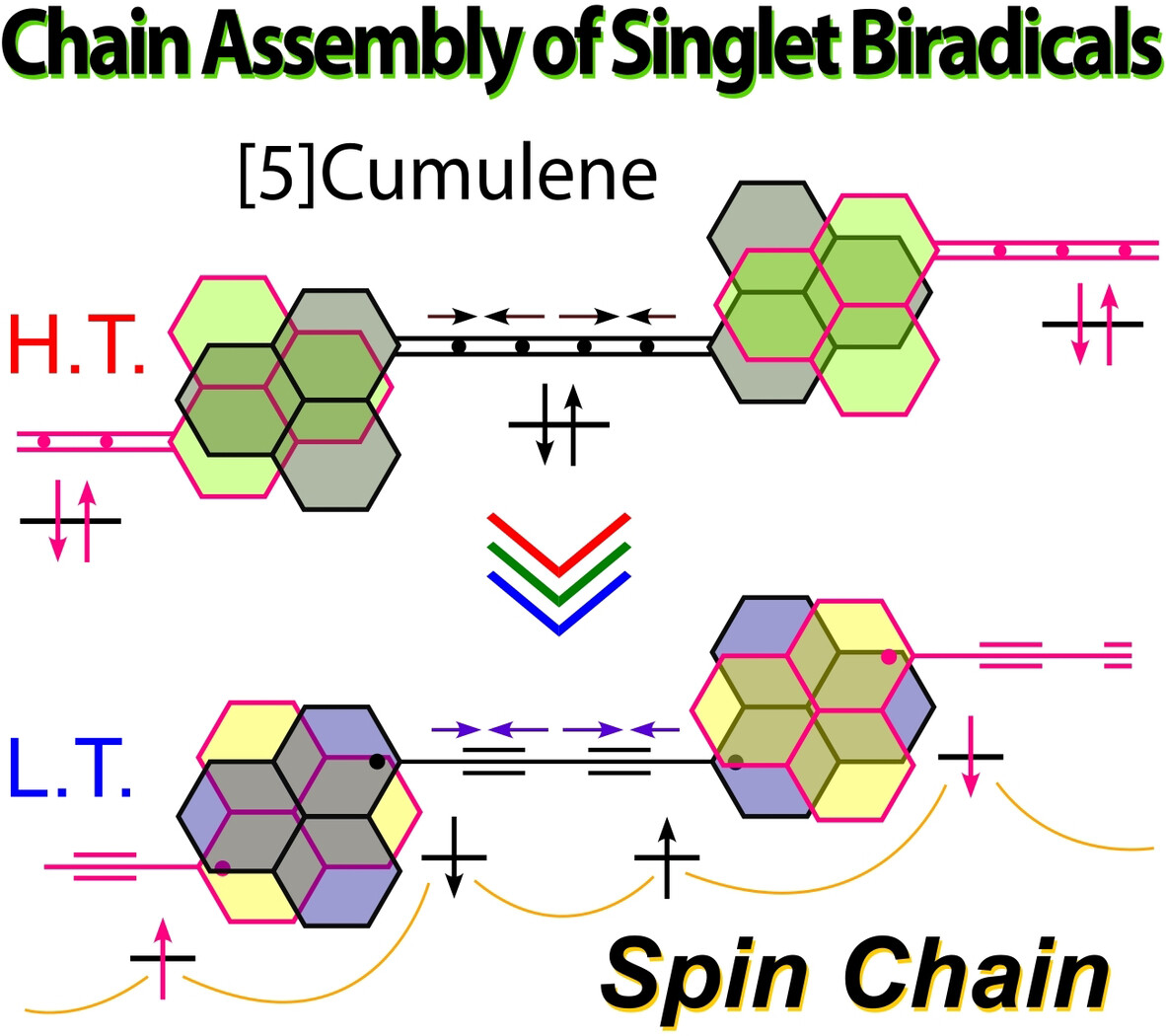
A singlet biradical based on [5]cumulene end-capped with phenalenyl moieties was synthesized. The strong π–π stacking tendency of phenalenyl units led to controlled self-assembly, with the formation of one-dimensional chain assemblies. Variable-temperature structural and Raman spectroscopic studies demonstrated that intramolecular spin pairs forming cumulene bonds coupled intermolecularly to form a continuum spin system at low temperatures (see picture).
Heterocycles | Hot Paper
Catalytic System-Controlled Divergent Reaction Strategies for the Construction of Diversified Spiropyrazolone Skeletons from Pyrazolidinones and Diazopyrazolones
- Pages: 21327-21333
- First Published: 28 June 2021
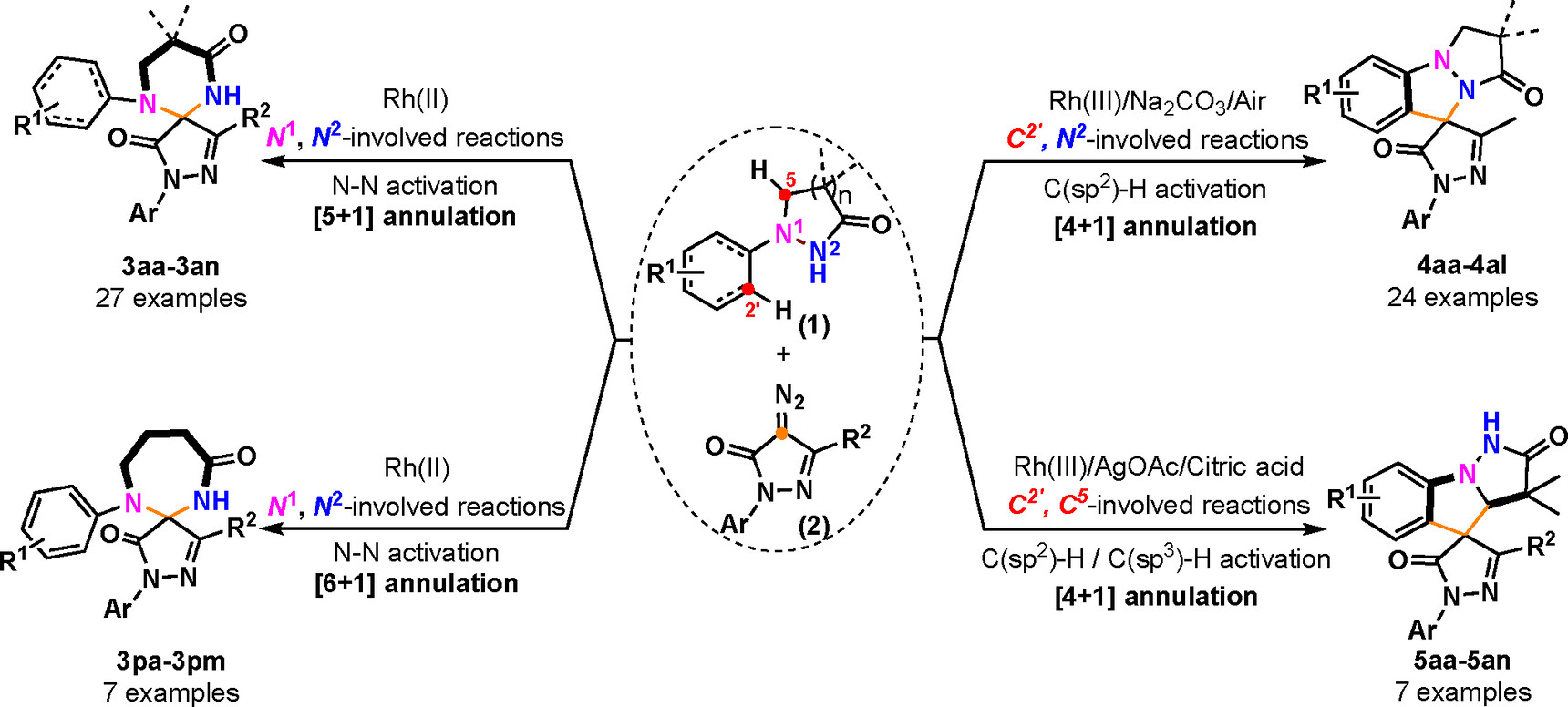
Four types of novel and complicated spiropyrazolones from pyrazolidinones and diazopyrazolones were constructed via a precise chemical bond activation/[n+1] annulation route, especially a selective N−N bond activation/[n+1] annulation cascade and a novel tandem C(sp2)−H/C(sp3)−H bond activation/[4+1] annulation strategy, and diazopyrazolones acted as unexpected 1C synthons.
Asymmetric Catalysis | Hot Paper
Asymmetric Enamide–Imine Tautomerism in the Kinetic Resolution of Tertiary Alcohols
- Pages: 21334-21339
- First Published: 27 July 2021
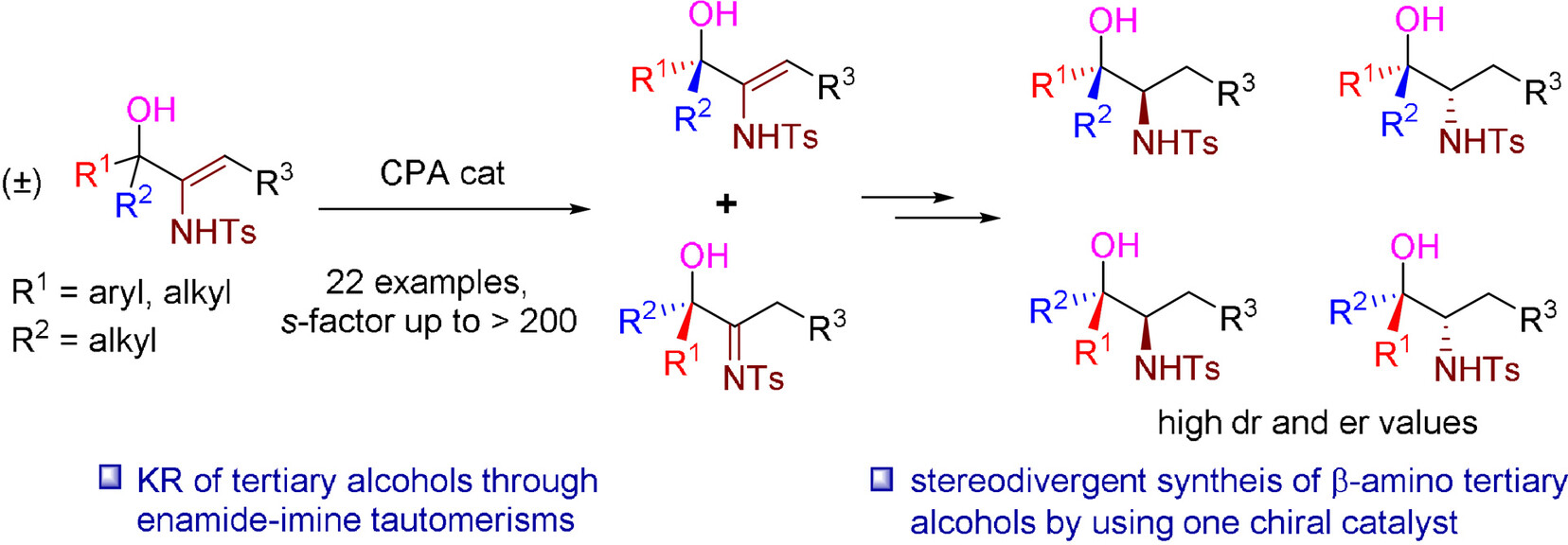
An unprecedented kinetic resolution of 2-amido tertiary allyl alcohols through chiral phosphoric acid-catalyzed enamide–imine tautomerism is reported. Both dialkyl- and aryl-alkyl-disubstituted allyl alcohols were compatible with this protocol, generating α-hydroxy imines and enamides with high enantioselectivities.
Heterogeneous Photocatalysis
Creation of High-Performance Heterogeneous Photocatalysts by Controlling Ligand Desorption and Particle Size of Gold Nanocluster
- Pages: 21340-21350
- First Published: 26 May 2021
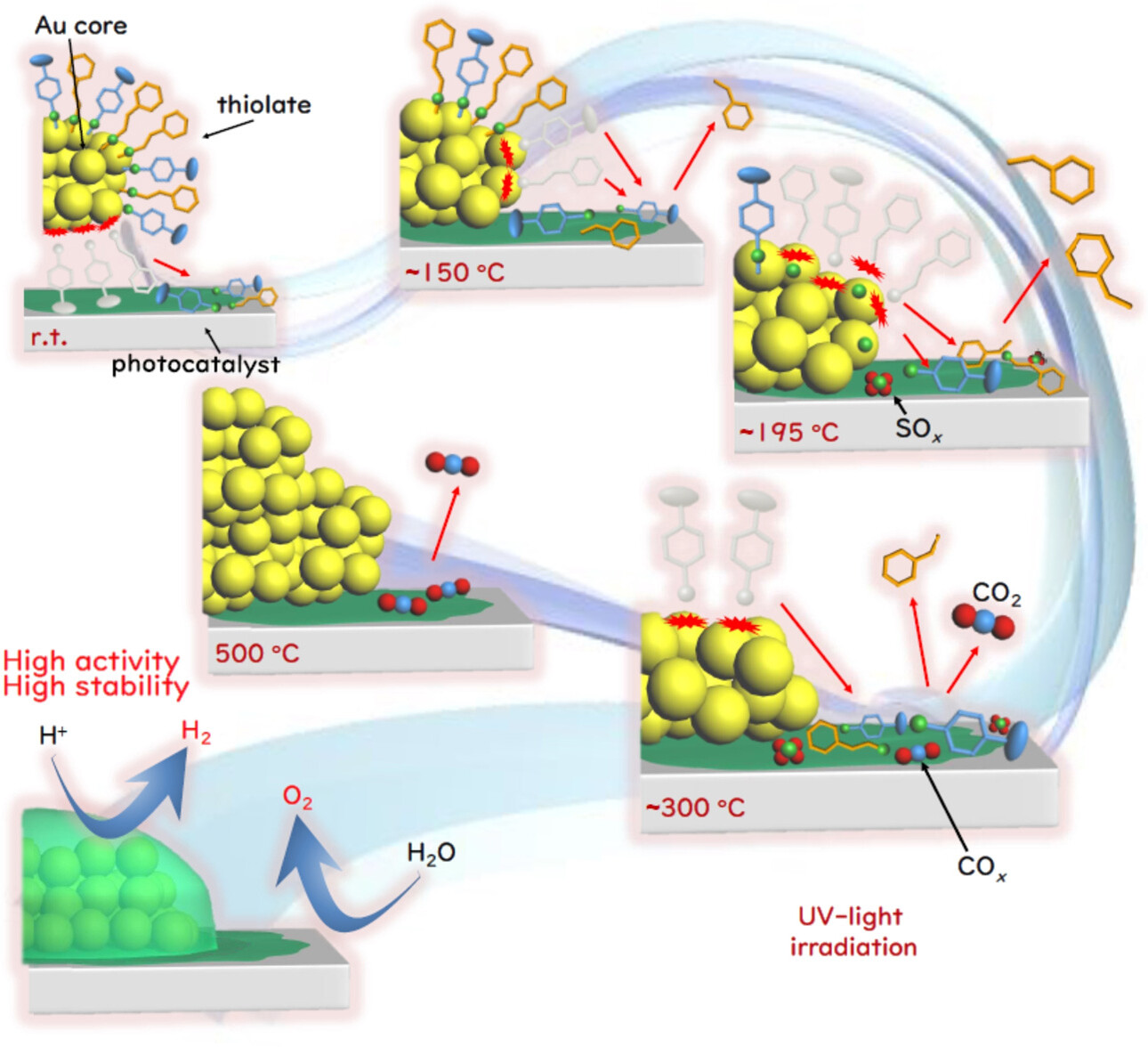
The ligand-desorption process during calcination was elucidated for metal-oxide-supported thiolate-protected gold (Au) 25-atom metal nanoculusters (NCs) using five experimental techniques. Furthermore, based on obtained knowledge, a method was established to form a metal-oxide layer on the surface of Au NCs while preventing their aggregation, thereby succeeding in creating a water-splitting photocatalyst with high activity and stability.
Biosensors | Hot Paper
Real-time Tracking and Sensing of Cu+ and Cu2+ with a Single SERS Probe in the Live Brain: Toward Understanding Why Copper Ions Were Increased upon Ischemia
- Pages: 21351-21359
- First Published: 06 July 2021
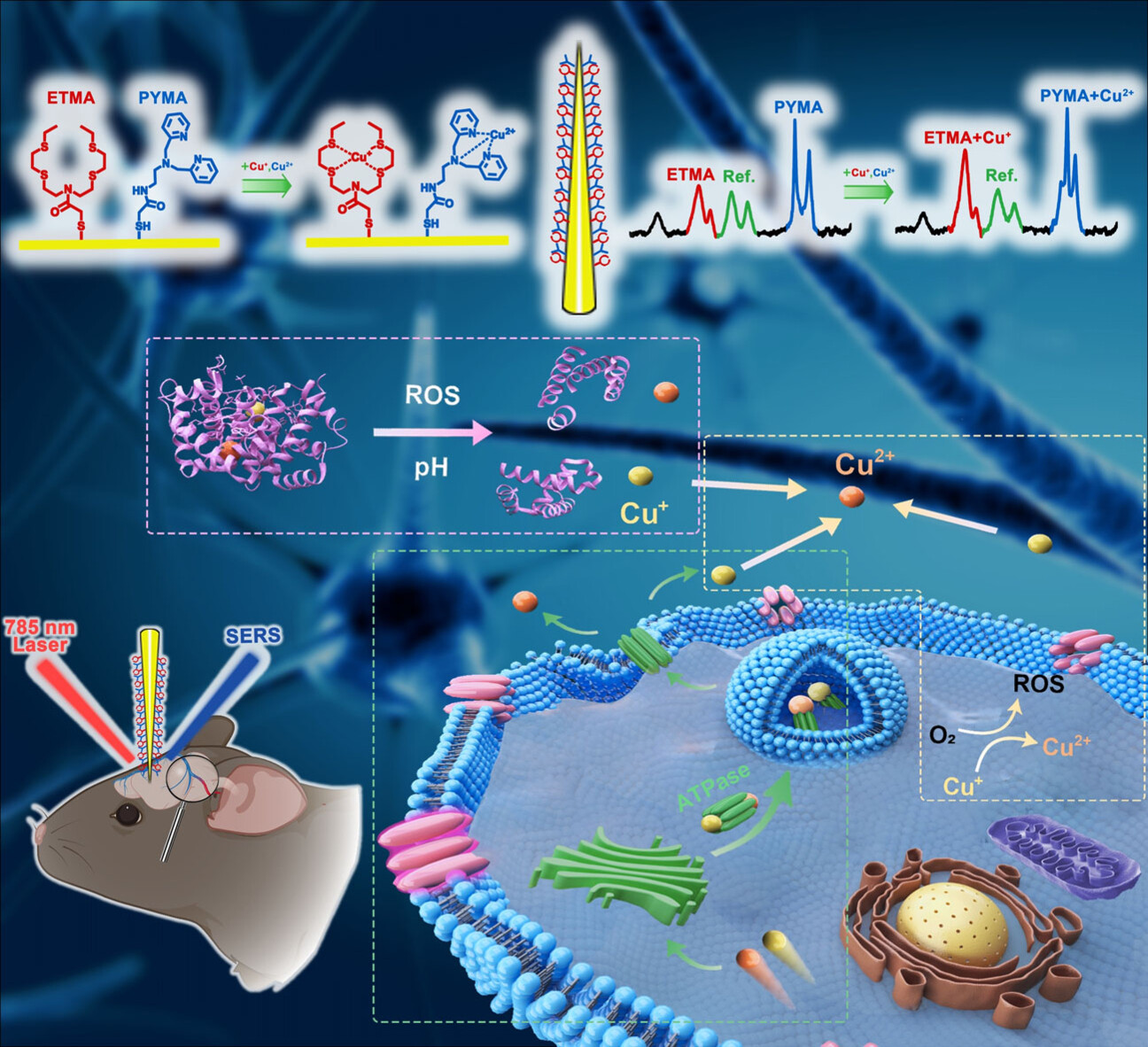
A novel SERS sensor was created for biosensing extracellular concentrations of Cu+ and Cu2+ simultaneously in the live brain. Using our powerful tool, three routes were discovered for understanding the mechanisms of the increased concentrations of Cu+ and Cu2+ during ischemia: Cu+ and Cu2+ were transported from neurons; Cu+ and Cu2+ were released from the destroyed copper-containing proteins; and Cu+ was converted into Cu2+.
Radical Reactions | Hot Paper
Radical 1,4-Aryl Migration Enabled Remote Cross-Electrophile Coupling of α-Amino-β-Bromo Acid Esters with Aryl Bromides
- Pages: 21360-21367
- First Published: 21 July 2021
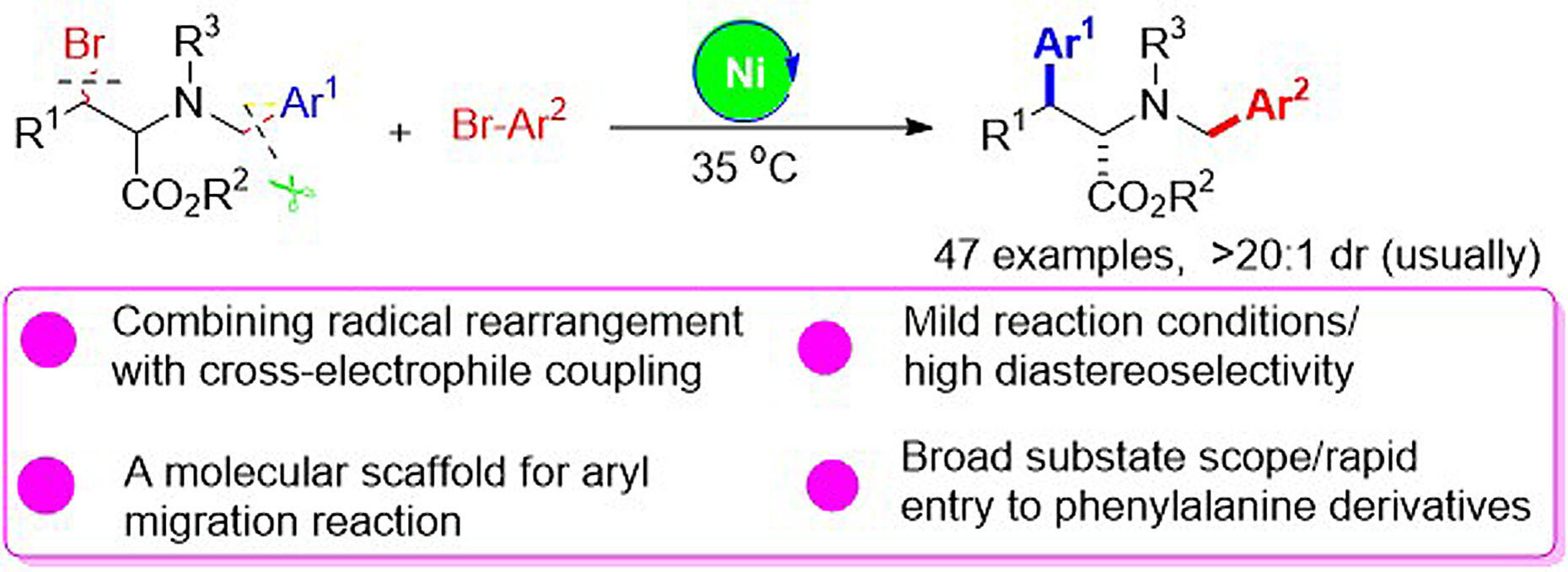
A nickel-catalysed radical relay strategy combines radical rearrangement and cross-coupling via a C(sp3)-centred radical, to produce valuable phenylalanine derivatives that are otherwise challenging to access. An N-benzyl amino acid ester functions as a molecular scaffold for the aryl migration reaction. The synthetic method offers mild reaction conditions, high diastereoselectivity, and broad substrate scope.
Perovskites
Crystal-Size-Induced Band Gap Tuning in Perovskite Films
- Pages: 21368-21376
- First Published: 20 July 2021

Energy levels of perovskite nanocrystallites depend on their size owing to quantum confinement and the concurrent yet distinct phenomenon of size-dependent structural changes where surface perturbations template the core. This effect can aid in the design of perovskite opto-electronic devices utilizing mesoporous layers to tailor the size of infiltrated nanocrystallites.
Electrochemistry
A General Synthesis Strategy for Hollow Metal Oxide Microspheres Enabled by Gel-Assisted Precipitation
- Pages: 21377-21383
- First Published: 18 August 2021

Gel-assisted precipitation (GAP) avoids synthesis challenges caused by the divergent properties of targeted metal and provides a simple and scalable method to build a large variety of hollow objects as demonstrated by more than 20 different kinds of HMMs as well as hollow structures of metal phosphate. The hollow and mesoporous Nb2O5 microspheres have favorable charge transport kinetics in a Li-ion intercalation pseudocapacitor.
Pseudo-Natural Products
Combination of Pseudo-Natural Product Design and Formal Natural Product Ring Distortion Yields Stereochemically and Biologically Diverse Pseudo-Sesquiterpenoid Alkaloids
- Pages: 21384-21395
- First Published: 23 July 2021
Electrochemistry | Hot Paper
Direct Detection of Surface Species Formed on Iridium Electrocatalysts during the Oxygen Evolution Reaction
- Pages: 21396-21403
- First Published: 03 August 2021

An approach to directly examine the oxidation state and surface composition of nanosized Ir electrodes after oxygen evolution reaction (OER) was developed. Atom probe tomography reveals compositional changes in the topmost surface and subsurface on various Ir planes during OER. This approach provides atomic-scale insights into surface changes during electrochemical reactions.
Polymers | Hot Paper
Effective and Rapid Removal of Polar Organic Micropollutants from Water by Amide Naphthotube-Crosslinked Polymers
- Pages: 21404-21411
- First Published: 05 July 2021

The cross-linked polymers containing the biomimetic macrocyclic hosts, amide naphthotubes, are able to effectively and rapidly adsorb polar organic micropollutants from water by employing host–guest binding. The polymers can be readily regenerated through washing with MeOH or EtOH at room temperature.
Asymmetric Catalysis | Hot Paper
Asymmetric Alkylation of Ketones Catalyzed by Engineered TrpB
- Pages: 21412-21417
- First Published: 15 July 2021

Ketone-derived enolates can serve as nucleophiles for tryptophan synthase β-subunit (TrpB) catalysed reactions. The transient nucleophilic enolate species is intercepted by TrpB, which facilitates selective C−C bond formation, resulting in the asymmetric alkylation of ketones such as propiophenone and 2-fluoroacetophenone. The products spontaneously cyclize to form highly substituted nitrogen heterocycles that can be reduced to form proline analogs.
Electrophotocatalysis
Electrochemical Activation of Diverse Conventional Photoredox Catalysts Induces Potent Photoreductant Activity
- Pages: 21418-21425
- First Published: 19 July 2021
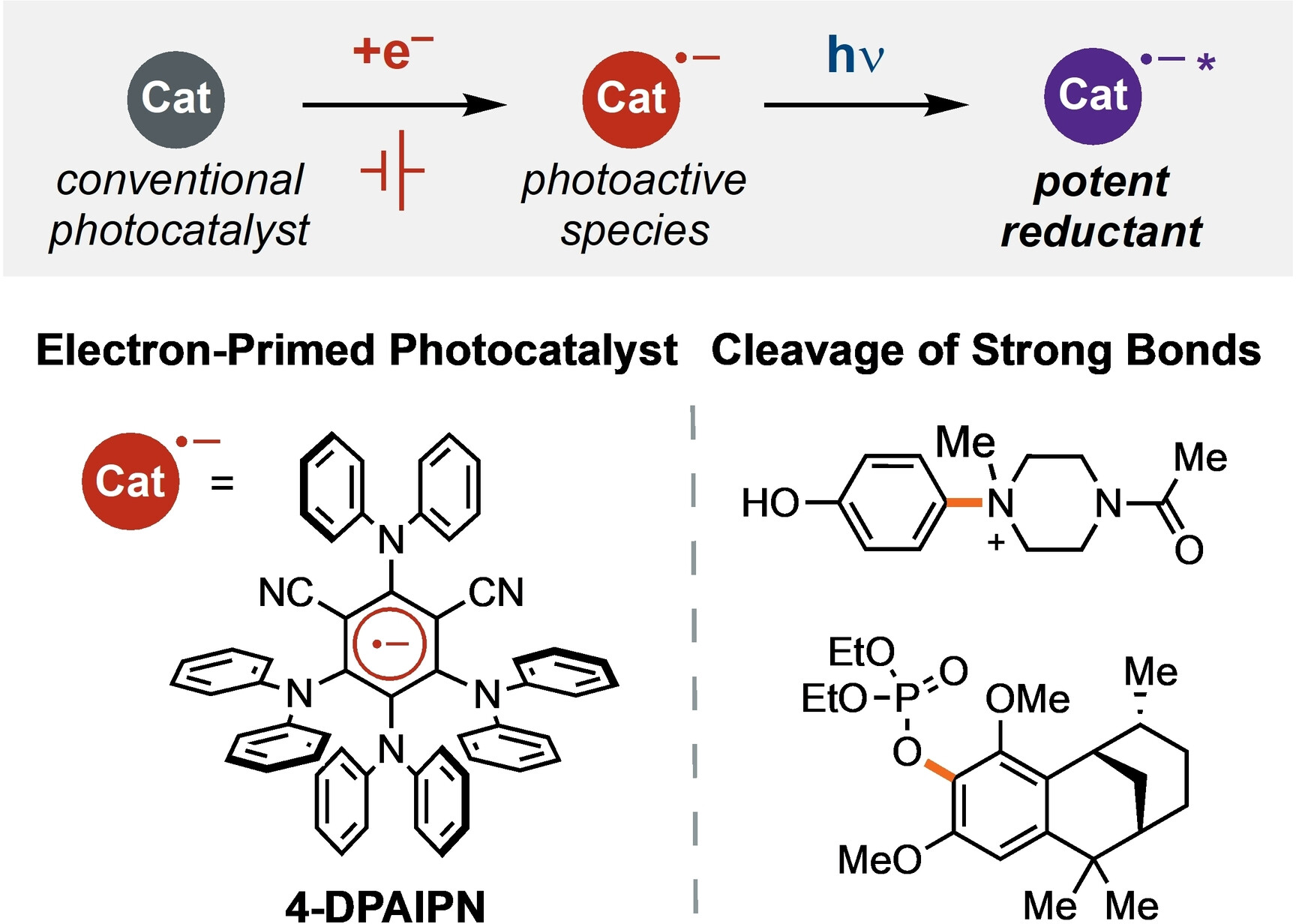
Electrochemical activation of conventional photocatalysts induces potent photoreductant activity. These studies resulted in the discovery of an electron-primed photoredox catalyst capable of cleaving strong aryl C−N and C−O bonds to aryl radical intermediates. Mechanistic experiments revealed that enhanced activity relative to previously developed electron-primed photoredox systems was a result of improved catalyst stability.
Adsorbents for I2 | Very Important Paper
Designable Assembly of Aluminum Molecular Rings for Sequential Confinement of Iodine Molecules
- Pages: 21426-21433
- First Published: 27 July 2021
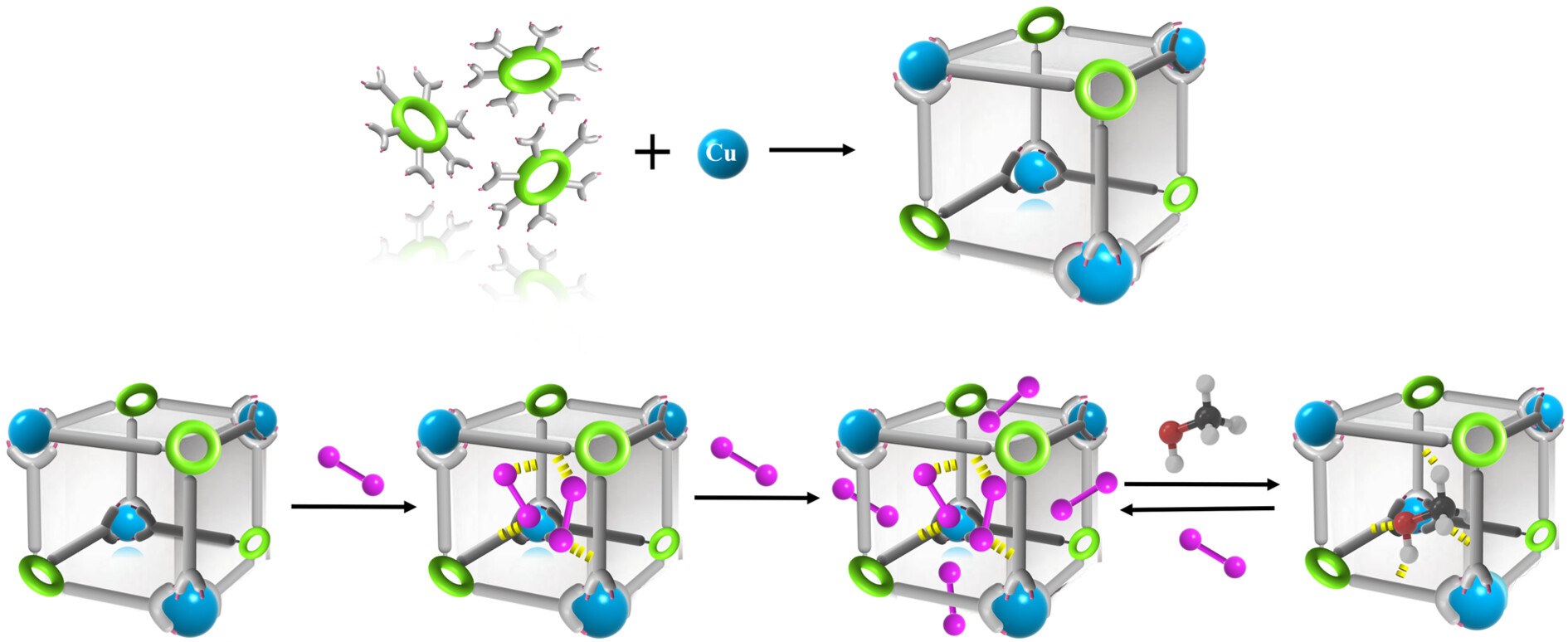
Heterometallic frameworks constructed from aluminum molecular rings of varying size, flexible copper ions, and conjugated carboxylate ligands act as adsorbents for the sequential confinement of iodine molecules. This work not only sets up a bridge between molecular rings and infinite porous networks but also reveals molecular details for the underlying host–guest binding interactions at crystallographic resolution.
Perovskites
Tuning the Circular Dichroism and Circular Polarized Luminescence Intensities of Chiral 2D Hybrid Organic–Inorganic Perovskites through Halogenation of the Organic Ions
- Pages: 21434-21440
- First Published: 28 July 2021

Through the incorporation of Cl-substituted chiral organic cations, the chiroptical properties of 2D chiral perovskites can be significantly enhanced. The observed circular dichroism and circular polarized luminescence intensities are found to be associated with the d-spacing of hybrid organic–inorganic perovskites and the strength of the halogen–halogen interaction within the system.
RNA Imaging
A Color-Shifting Near-Infrared Fluorescent Aptamer–Fluorophore Module for Live-Cell RNA Imaging
- Pages: 21441-21448
- First Published: 26 July 2021

A color-shifting, near-infrared (NIR) fluorescent aptamer–fluorophore module based on benzopyrylium-coumarin (BC) fluorophores for ratiometric RNA imaging is reported. Free BC is cyan fluorescent, however its fluorescence emission shifts to NIR upon complexation with the BC-binding aptamer (BeCA). This system enabled the visualization of mRNAs in the NIR region and the ratiometric analysis of target RNAs expressed at different levels in single cells.
Cancer Therapy | Hot Paper
{BiW8O30} Exerts Antitumor Effect by Triggering Pyroptosis and Upregulating Reactive Oxygen Species
- Pages: 21449-21456
- First Published: 27 July 2021
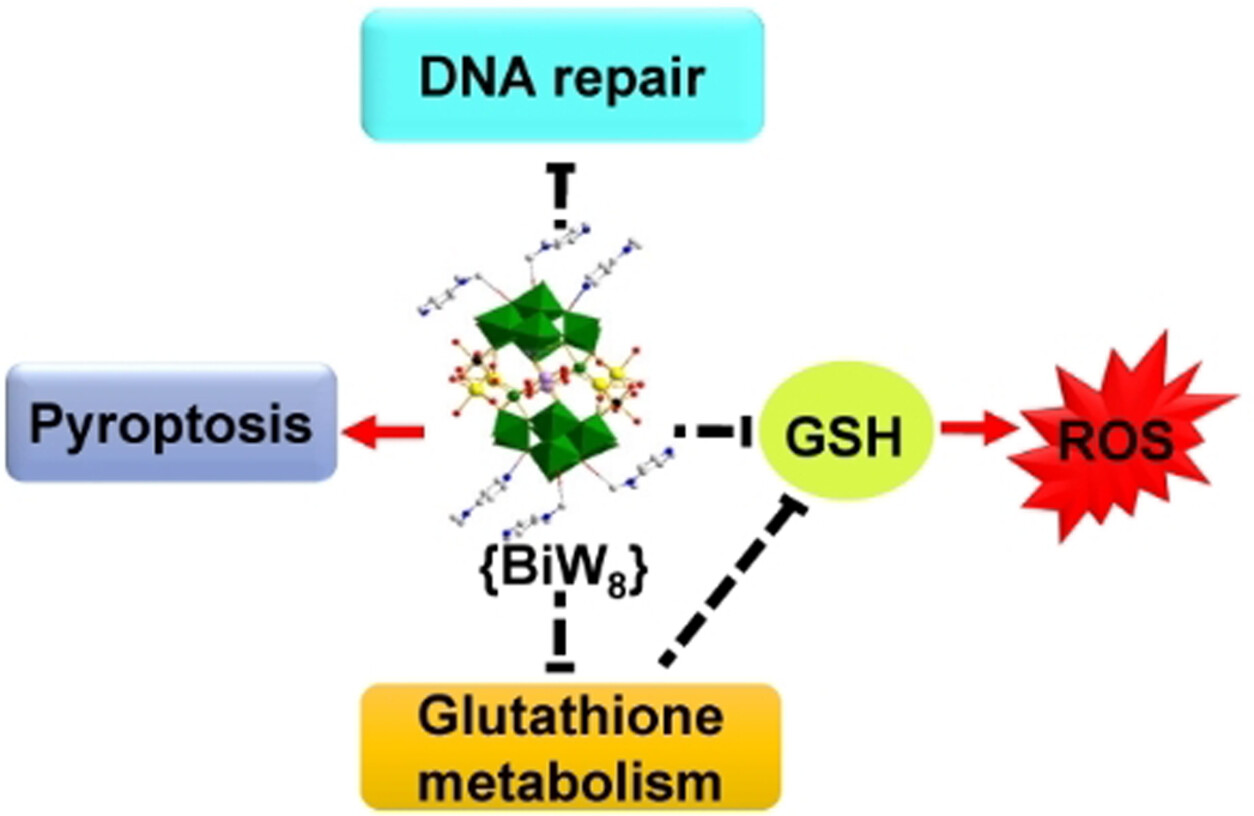
We successfully synthesized {BiW8}, a 10-nuclear heteroatom cluster modified {BiW8O30}. {BiW8} suppressed the proliferation, migration, and invasion of MG63 cells. We identified POM-induced pyroptosis for the first time. Decreased GSH content and increased ROS levels were observed in {BiW8}-treated cells. {BiW8} executed multiple antitumor mechanisms, such as activation of pyroptosis, regulation of oxidative stress, and inhibition of DNA repair.
Bioinorganic Chemistry
Biomimetic Iron Complex Achieves TET Enzyme Reactivity
- Pages: 21457-21463
- First Published: 28 June 2021
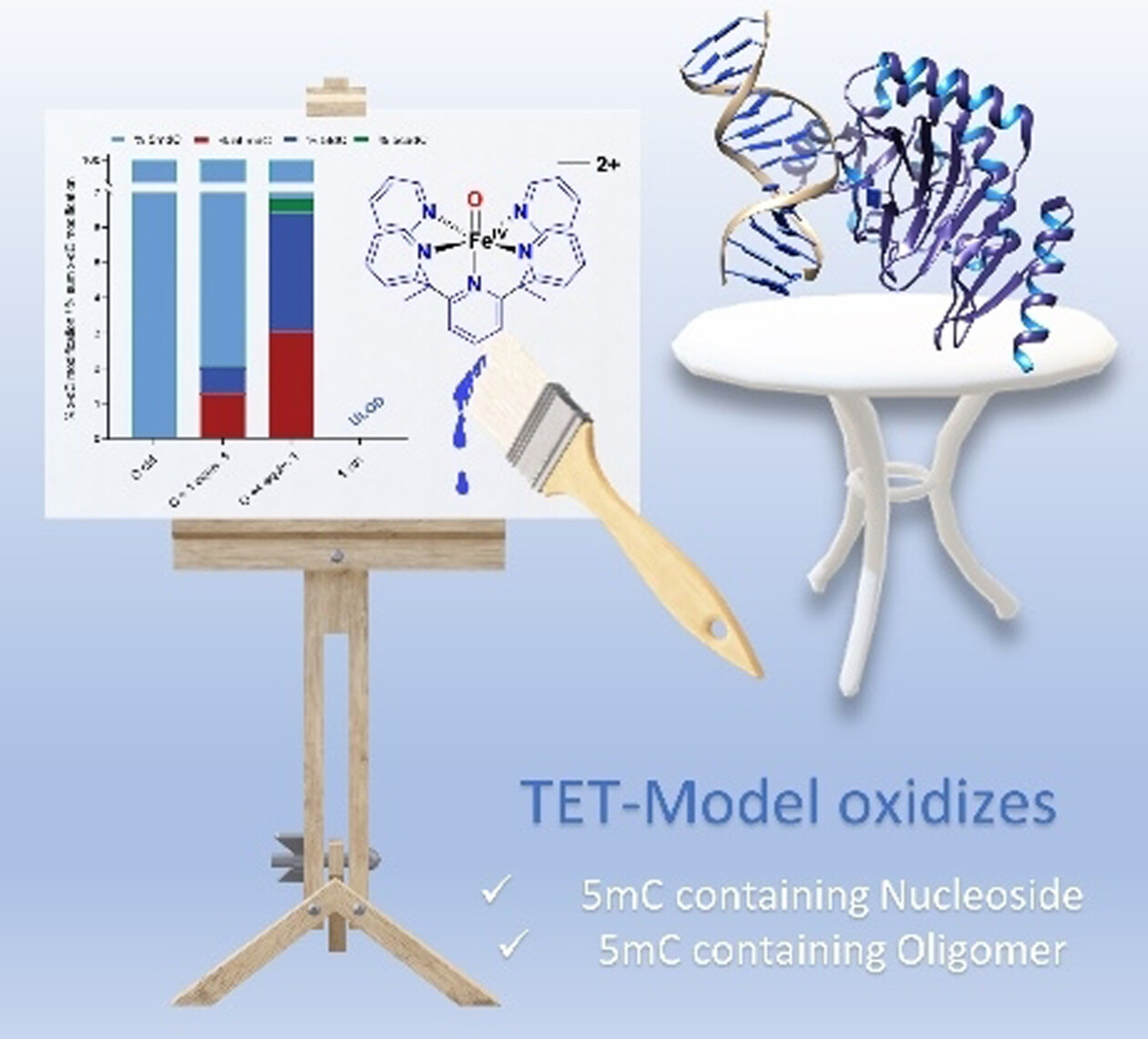
The synthetic iron(IV)-oxo complex [FeIV(O)(Py5Me2H)]2+ serves as a biomimetic model for TET by oxidizing the nucleobase 5-methyl cytosine (5mC) to its natural metabolites. In this work, we demonstrate that nucleosides and short oligonucleotide strands serve as substrates. The 5-position of 5mC is oxidized preferably and highly selectively by the complex.
Electrocatalysis
MnO2 Electrocatalysts Coordinating Alcohol Oxidation for Ultra-Durable Hydrogen and Chemical Productions in Acidic Solutions
- Pages: 21464-21472
- First Published: 28 July 2021
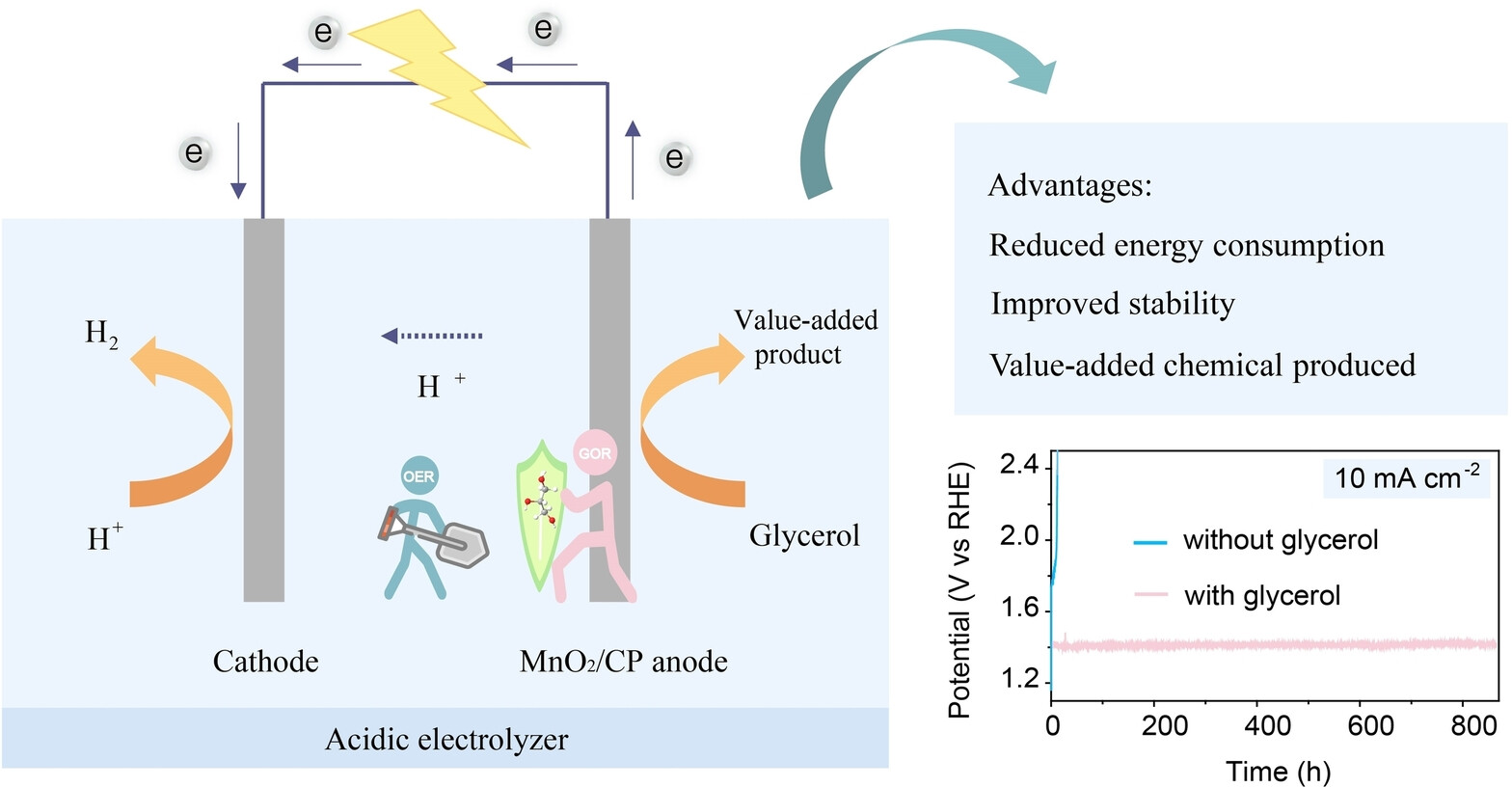
This work reports a strategy of using a low-cost acidic aqueous solution of alcohols for efficient hydrogen/chemical co-production. The as-prepared non-precious metal MnO2/carbon paper electrocatalyst in combination with alcohol oxidation demonstrates a significantly decreased total energy input for hydrogen production and ultra-high durability in acidic electrolytes.
Electrolytes | Very Important Paper
An Atomic Insight into the Chemical Origin and Variation of the Dielectric Constant in Liquid Electrolytes
- Pages: 21473-21478
- First Published: 05 July 2021
Heterogeneous Catalysis
Highly Efficient Oxidative Cyanation of Aldehydes to Nitriles over Se,S,N-tri-Doped Hierarchically Porous Carbon Nanosheets
- Pages: 21479-21485
- First Published: 28 July 2021

Metal-free Se,S,N-tri-doped carbon nanosheets (Se,S,N-CNs-1000) show high activity and selectivity for oxidative cyanation of various aldehydes to synthesize organic nitriles using ammonia as the nitrogen resource. Other oxidizable groups were tolerated, and no further reaction of the product was observed over Se,S,N-CNs-1000.
Asymmetric Catalysis | Hot Paper
Organocatalytic Enantioselective Construction of Chiral Azepine Skeleton Bearing Multiple-Stereogenic Elements
- Pages: 21486-21493
- First Published: 08 July 2021
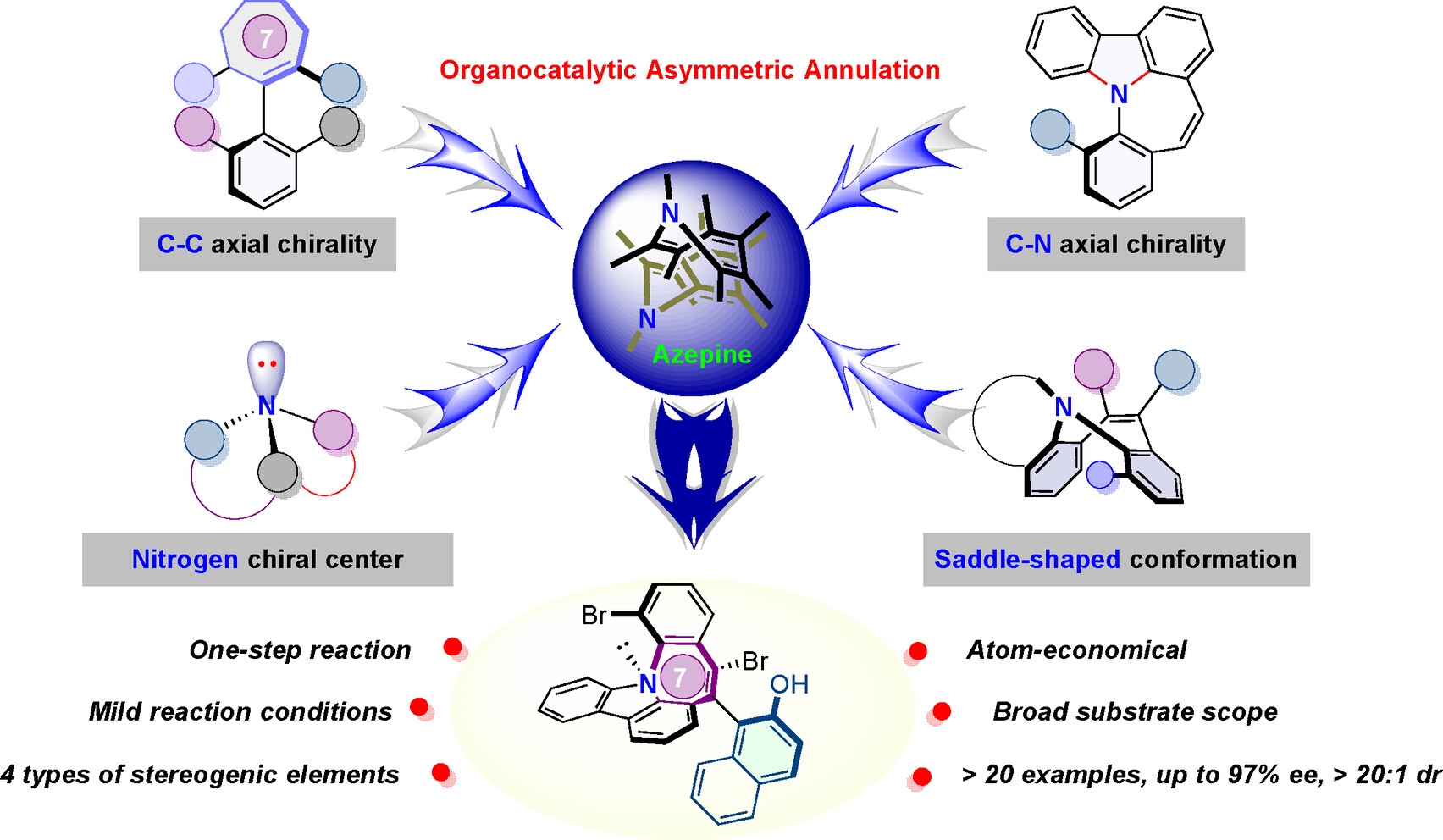
An organocatalytic enantioselective method for the preparation of polychiral molecules via vinylidene ortho-quinone methide (VQM)-mediated intramolecular electrophilic aromatic substitution was developed. With this methodology, four types of stereogenic elements including chiral nitrogen center, C−N axial chirality, C−C axial chirality and conformational behavior of the seven-membered ring were stereoselectively constructed.
Solid-State Batteries | Very Important Paper
Interfacial Defect of Lithium Metal in Solid-State Batteries
- Pages: 21494-21501
- First Published: 30 July 2021
Heterogeneous Catalysis
New Mechanistic and Reaction Pathway Insights for Oxidative Coupling of Methane (OCM) over Supported Na2WO4/SiO2 Catalysts
- Pages: 21502-21511
- First Published: 02 August 2021
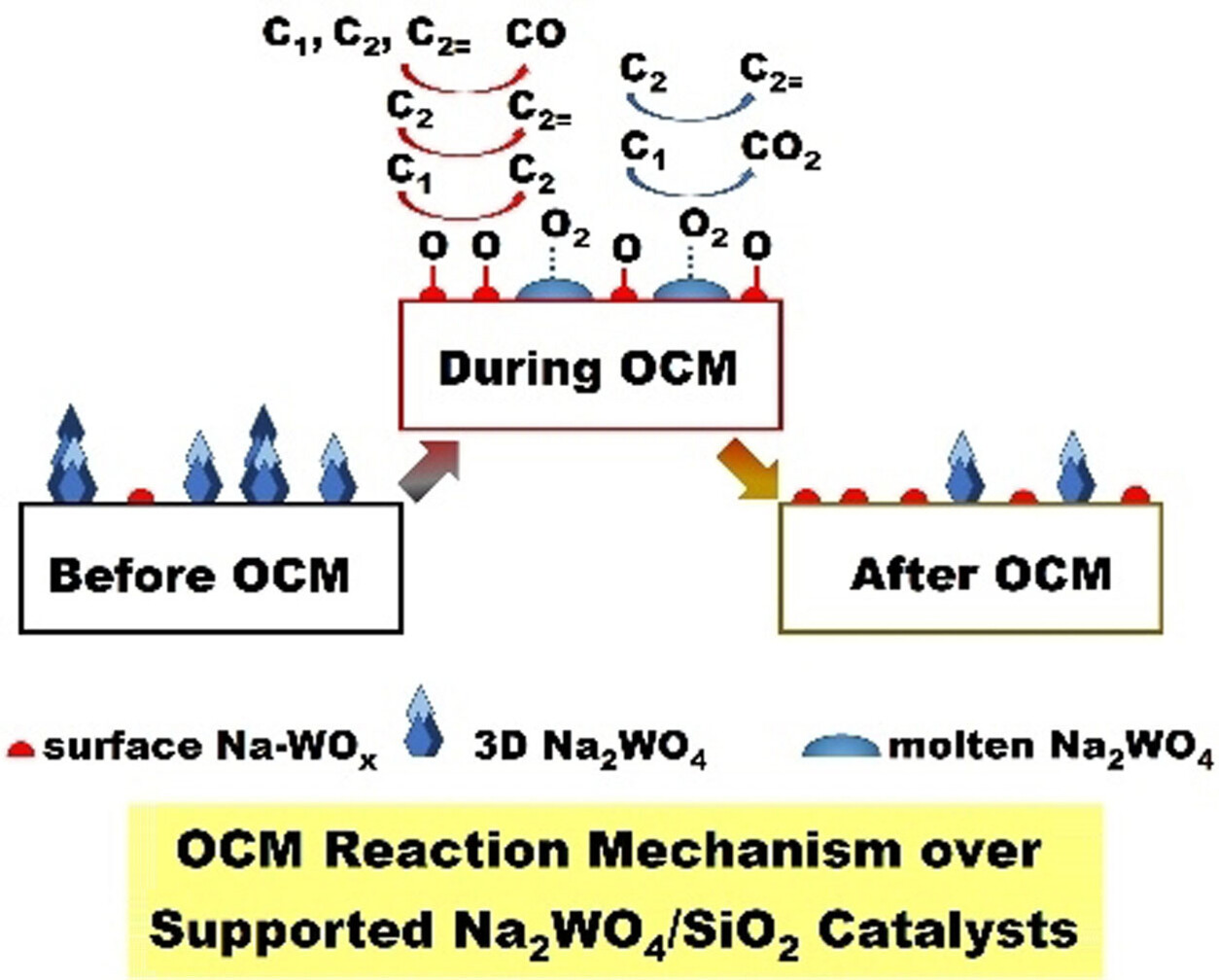
In the current study, with the aid of state-of-the-art spectroscopic techniques, transient kinetic analysis, and implementation of robust experimental methodologies, we resolve the nature of catalytic active sites and reaction mechanism for oxidative coupling of methane over supported Na2WO4/SiO2 catalysts.
Batteries
Mo2C/C Hierarchical Double-Shelled Hollow Spheres as Sulfur Host for Advanced Li-S Batteries
- Pages: 21512-21520
- First Published: 26 July 2021

Mo2C/C hierarchical double-shelled hollow spheres with mesoporous thick inner shell and microporous thin outer shell are proposed as an ideal sulfur host for Li-S batteries. The double-shelled spheres demonstrate superior structural and compositional advantages when employed as cathode material in Li-S batteries.
Semiconducting Polymers
An Efficient Diazirine-Based Four-Armed Cross-linker for Photo-patterning of Polymeric Semiconductors
- Pages: 21521-21528
- First Published: 03 August 2021
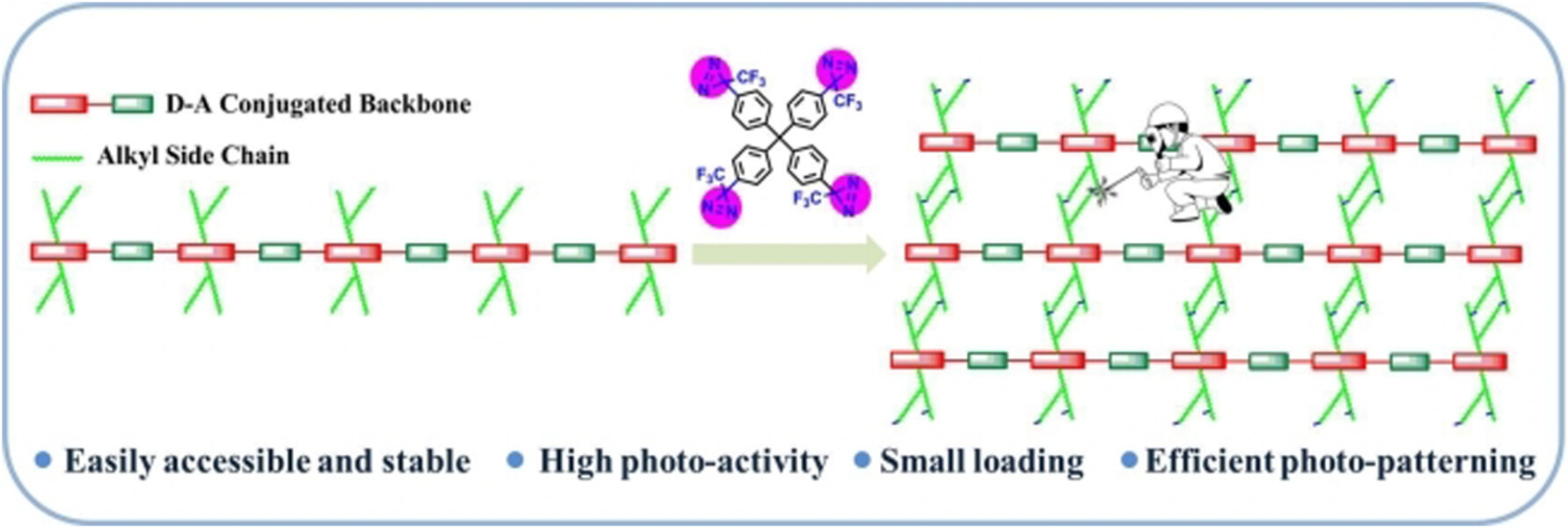
A tetra-diazirine based cross-linker (4CNN) is developed for the universal patterning of p-type, n-type, and ambipolar conjugated polymers by photo-induced carbene insertion. The interchain packing orders, the thin film morphologies and the charge carrier mobilities of four conjugated polymers are retained after patterning.
Surface Chemistry
Sono-Fenton Chemistry Converts Phenol and Phenyl Derivatives into Polyphenols for Engineering Surface Coatings
- Pages: 21529-21535
- First Published: 02 August 2021
C−N Coupling
Chiral Arylated Amines via C−N Coupling of Chiral Amines with Aryl Bromides Promoted by Light
- Pages: 21536-21542
- First Published: 14 July 2021
Hydrogels | Hot Paper
Dual-Responsive Material Based on Catechol-Modified Self-Immolative Poly(Disulfide) Backbones
- Pages: 21543-21549
- First Published: 19 July 2021

Catechol-functionalized self-immolative poly(disulfides) are synthesized and fashioned into dual-responsive gels through formation of catecholato–Al3+ cross-links. Two distinct pathways to cargo release are engineered, namely the depolymerization in a self-immolative fashion, or breaking catecholato–Al3+ cross-links at low pH. Both gel degradation pathways lead to release of bound dye molecules on demand.
Transition Metal Dichalcogenides
Scalable Synthesis of Tungsten Disulfide Nanosheets for Alkali-Acid Electrocatalytic Sulfion Recycling and H2 Generation
- Pages: 21550-21557
- First Published: 21 July 2021
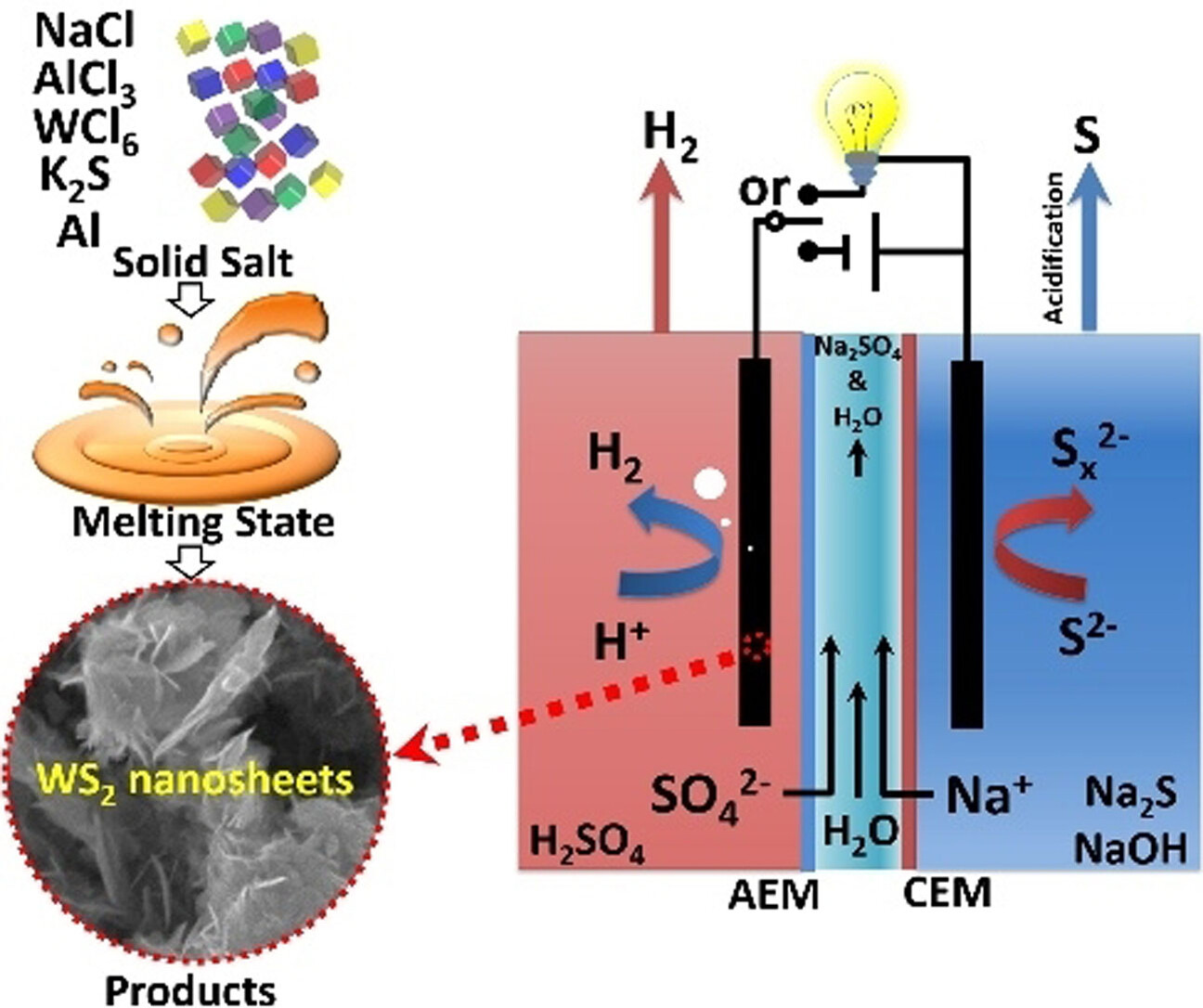
A scalable low-temperature molten-salt-assisted method was developed for synthesis of WS2 nanosheets with high-quality and high-yield. The WS2 nanosheets show high electrocatalytic activity towards the alkaline sulfion (S2−) oxidation reaction and the acidic hydrogen evolution reaction. A proof-of-concept hybrid alkali-acid electrochemical device was set up for electrolytic H2 generation and environmentally friendly recycling of sulfion.
Nonheme Complexes
A Nonheme Mononuclear {FeNO}7 Complex that Produces N2O in the Absence of an Exogenous Reductant
- Pages: 21558-21564
- First Published: 20 August 2021
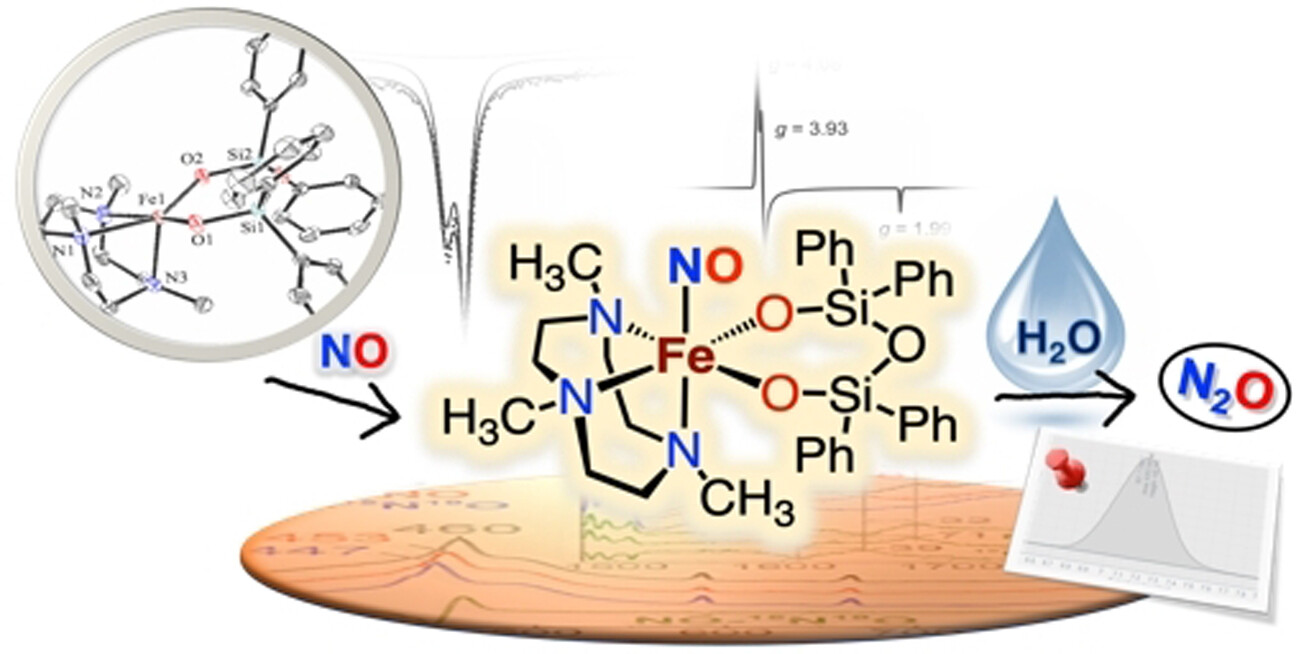
We demonstrate the first example of a nonheme, mononuclear {FeNO}7 complex that mediates the conversion of NO to N2O in the absence of an external reductant. A new mononuclear, 5-coordinate FeII complex is synthesized, which binds nitric oxide to form the {FeNO}7 complex. This complex exhibits a highly activated NO ligand as seen by RR spectroscopy, and generates N2O in THF upon addition of H2O.
Theranostics | Very Important Paper
Nanomediator–Effector Cascade Systems for Amplified Protein Kinase Activity Imaging and Phosphorylation-Induced Drug Release In Vivo
- Pages: 21565-21574
- First Published: 28 July 2021
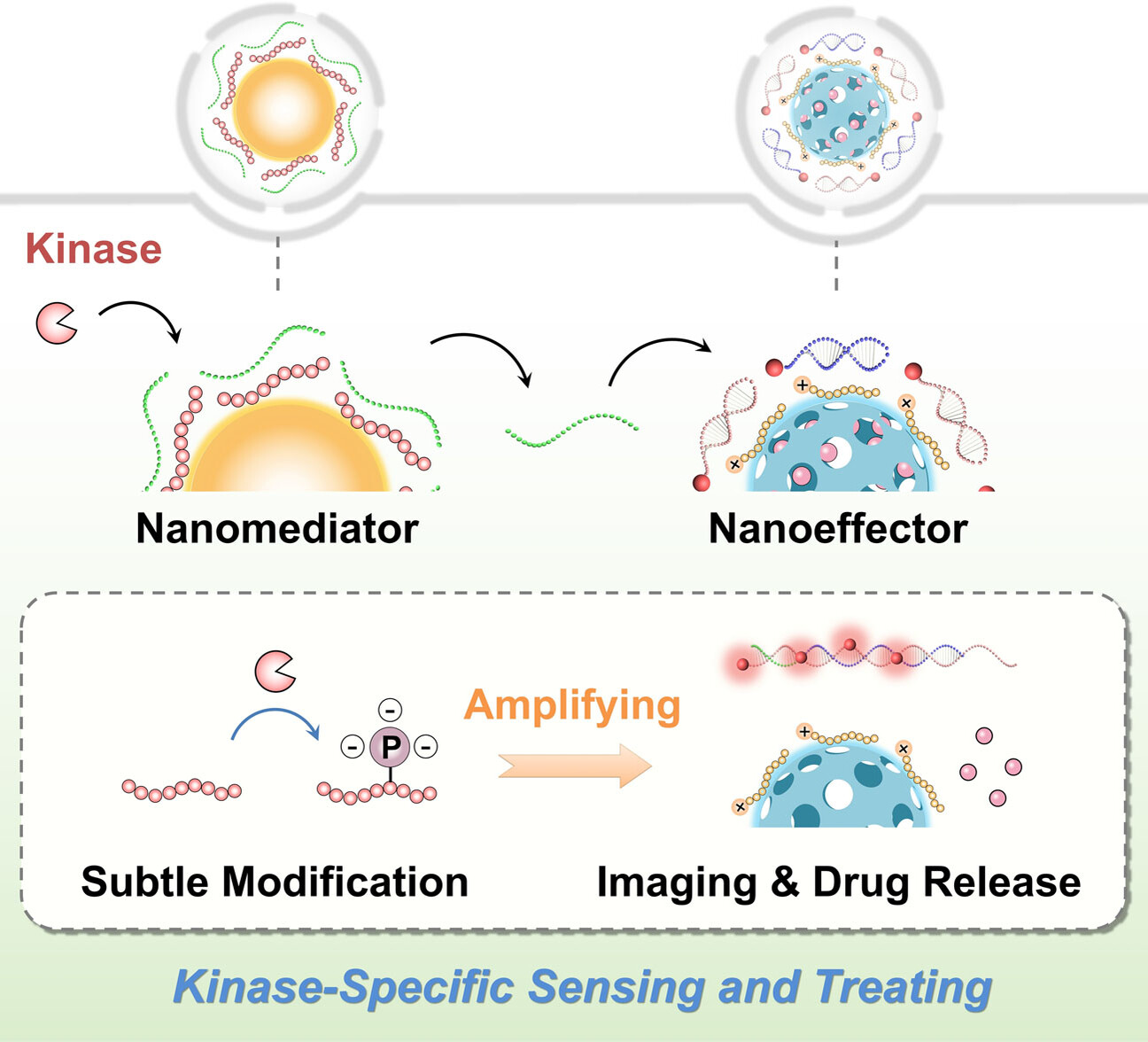
We propose a nanomediator–effector cascade system that can convert the subtle events of kinase-regulated phosphorylation to augmented fluorescence recovery and cargo release via the DNA amplification machinery. This kinase-specific sensing and treating modality allows kinase activity imaging and cellular signaling-responsive drug release in vivo.
Hydrogen Evolution Reaction
Nitrogen-Doped Cobalt Diselenide with Cubic Phase Maintained for Enhanced Alkaline Hydrogen Evolution
- Pages: 21575-21582
- First Published: 05 August 2021

When an electrocatalyst for the alkaline hydrogen evolution reaction (HER) based on cubic CoSe2 was doped with the light element nitrogen, the electronic structure was modulated while the highly symmetric crystal structure phase was maintained. This nitrogen-doped CoSe2 shows enhanced alkaline HER electrocatalytic activity, while no structural reconstruction occurs during the HER process.
Perovskites | Very Important Paper
Fluoride Chemistry in Tin Halide Perovskites
- Pages: 21583-21591
- First Published: 06 July 2021
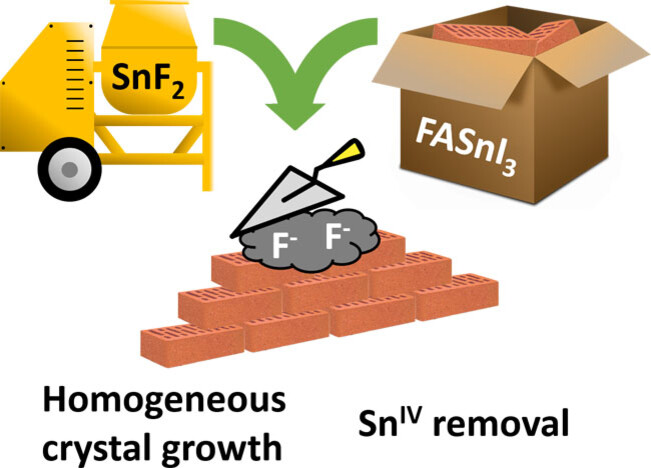
Fluoride chemistry in tin halide perovskites improves the crystallization process. Fluoride anions selectively coordinate and remove SnIV and affect the colloidal properties in solution. This study describes the working mechanism of SnF2 and highlights the importance of solution chemistry for controlling crystallization and SnII oxidation in tin halide perovskites.




